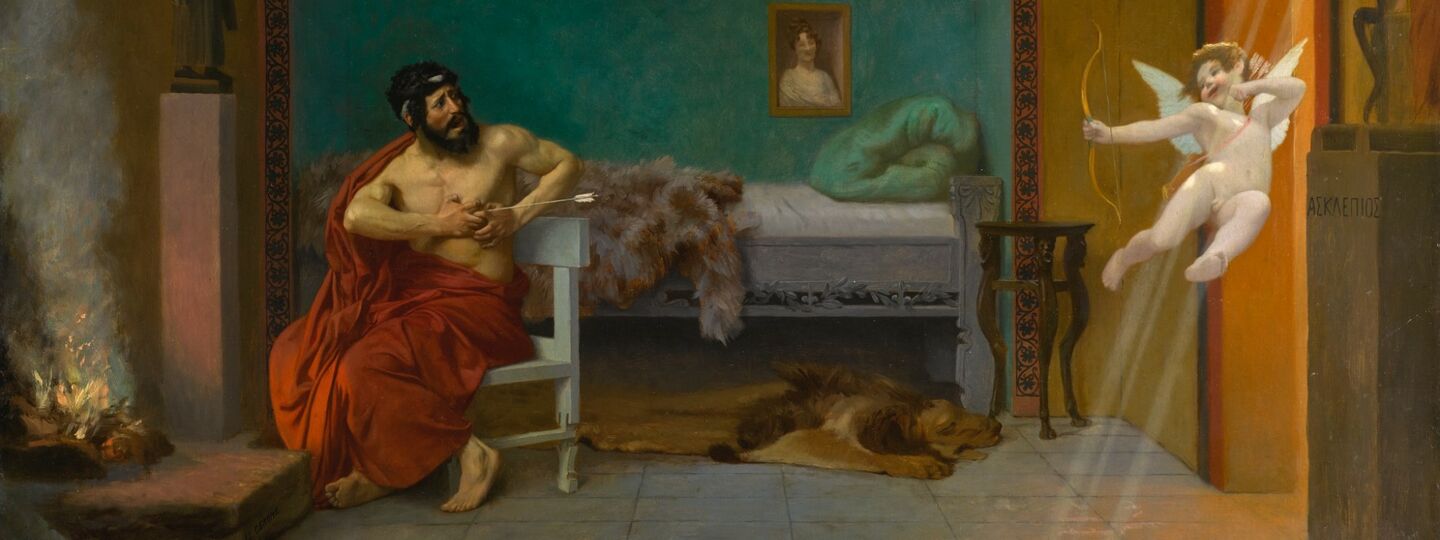
Info
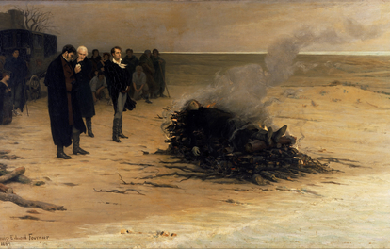
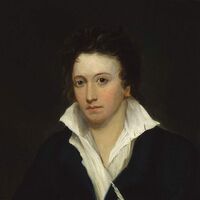
Percy Bysshe Shelley (4 August 1792 – 8 July 1822) was one of the major English Romantic poets and is critically regarded as among the finest lyric poets in the English language. Shelley was famous for his association with John Keats and Lord Byron. The novelist Mary Shelley (née Godwin) was his second wife. Shelley's unconventional life and uncompromising idealism, combined with his strong disapproving voice, made him a marginalized figure during his life, important in a fairly small circle of admirers, and opened him to criticism as well as praise afterward.
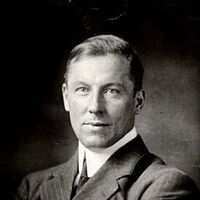
Robert William Service (January 16, 1874 – September 11, 1958) was a poet and writer who has often been called "the Bard of the Yukon". He was born in Preston, Lancashire, England and he is best known for his poems "The Shooting of Dan McGrew" and "The Cremation of Sam McGee", from his first book, Songs of a Sourdough (1907; also published as The Spell of the Yukon and Other Verses).
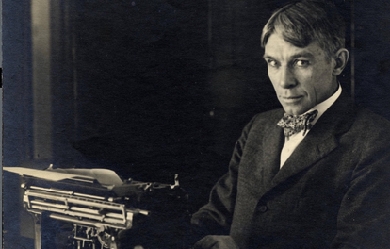
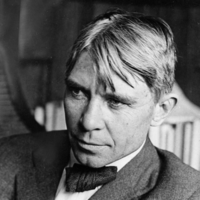
Carl Sandburg was born in Galesburg, Illinois, on January 6, 1878. His parents, August and Clara Johnson, had emigrated to America from the north of Sweden. After encountering several August Johnsons in his job for the railroad, the Sandburg's father renamed the family. The Sandburgs were very poor; Carl left school at the age of thirteen to work odd jobs, from laying bricks to dishwashing, to help support his family. At seventeen, he traveled west to Kansas as a hobo. He then served eight months in Puerto Rico during the Spanish-American war. While serving, Sandburg met a student at Lombard College, the small school located in Sandburg's hometown. The young man convinced Sandburg to enroll in Lombard after his return from the war.
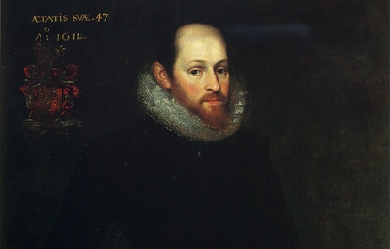

William Shakespeare (baptised 26 April 1564; died 23 April 1616) was an English poet and playwright, widely regarded as the greatest writer in the English language and the world's pre-eminent dramatist. He is often called England's national poet and the "Bard of Avon". His surviving works, including some collaborations, consist of about 38 plays, 154 sonnets, two long narrative poems, and several other poems. His plays have been translated into every major living language and are performed more often than those of any other playwright. Authorship Around 230 years after Shakespeare’s death, doubts began to be expressed about the authorship of the works attributed to him. Proposed alternative candidates include Francis Bacon, Christopher Marlowe, and Edward de Vere, 17th Earl of Oxford. Several “group theories” have also been proposed. All but a few Shakespeare scholars and literary historians consider it a fringe theory, with only a small minority of academics who believe that there is reason to question the traditional attribution, but interest in the subject, particularly the Oxfordian theory of Shakespeare authorship, continues into the 21st century.

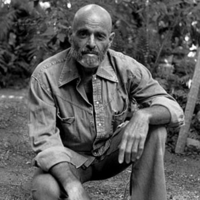
Sheldon Allan Shel Silverstein (September 25, 1930 – May 10, 1999), was an American poet, singer-songwriter, cartoonist, screenwriter, and author of children's books. He styled himself as Uncle Shelby in some works. Translated into more than 30 languages, his books have sold over 20 million copies.
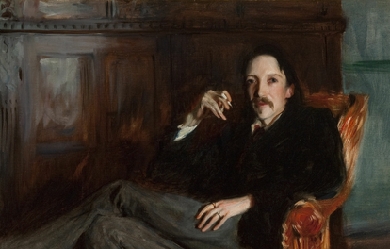
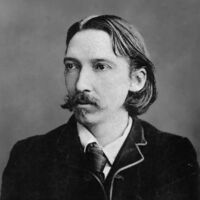
Robert Louis Balfour Stevenson (13 November 1850 – 3 December 1894) was a Scottish novelist, poet, essayist and travel writer. His best-known books include Treasure Island, Kidnapped, and Strange Case of Dr Jekyll and Mr Hyde. A literary celebrity during his lifetime, Stevenson now ranks among the 26 most translated authors in the world. He has been greatly admired by many authors, including Jorge Luis Borges, Ernest Hemingway, Rudyard Kipling, Marcel Schwob, Vladimir Nabokov, J. M. Barrie, and G. K. Chesterton, who said of him that he “seemed to pick the right word up on the point of his pen, like a man playing spillikins”.
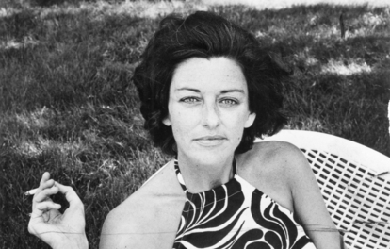
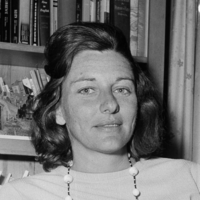
Anne Sexton (November 9, 1928, Newton, Massachusetts – October 4, 1974, Weston, Massachusetts) was an American poetese, known for her highly personal, confessional verse. She won the Pulitzer Prize for poetry in 1967. Themes of her poetry include her suicidal tendencies, long battle against depression and various intimate details from her private life, including her relationships with her husband and children. Sexton suffered from severe mental illness for much of her life, her first manic episode taking place in 1954.
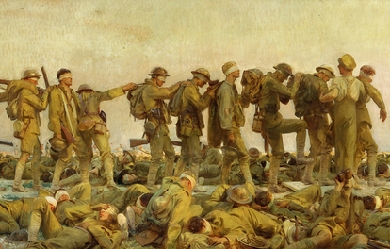
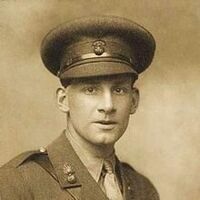
Siegfried Loraine Sassoon (8 September 1886 – 1 September 1967) was an English poet, author and soldier. Decorated for bravery on the Western Front, he became one of the leading poets of the First World War. His poetry both described the horrors of the trenches, and satirised the patriotic pretensions of those who, in Sassoon's view, were responsible for a vainglorious war. He later won acclaim for his prose work, notably his three-volume fictionalised autobiography, collectively known as the "Sherston Trilogy". Motivated by patriotism, Sassoon joined the British Army just as the threat of World War I was realised, and was in service with the Sussex Yeomanry on the day the United Kingdom declared war (4 August 1914). He broke his arm badly in a riding accident and was put out of action before even leaving England, spending the spring of 1915 convalescing.
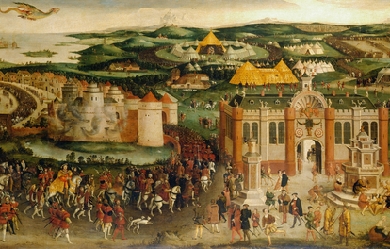
Edmund Spenser (c. 1552 – 13 January 1599) was an English poet best known for The Faerie Queene, an epic poem and fantastical allegory celebrating the Tudor dynasty and Elizabeth I. He is recognised as one of the premier craftsmen of Modern English verse in its infancy, and is considered one of the greatest poets in the English language. Edmund Spenser was born in East Smithfield, London, around the year 1552, though there is some ambiguity as to the exact date of his birth. As a young boy, he was educated in London at the Merchant Taylors' School and matriculated as a sizar at Pembroke College, Cambridge. While at Cambridge he became a friend of Gabriel Harvey and later consulted him, despite their differing views on poetry. In 1578 he became for a short time secretary to John Young, Bishop of Rochester. In 1579 he published The Shepheardes Calender and around the same time married his first wife, Machabyas Childe. In July 1580 Spenser went to Ireland in service of the newly appointed Lord Deputy, Arthur Grey, 14th Baron Grey de Wilton. When Grey was recalled to England, he stayed on in Ireland, having acquired other official posts and lands in the Munster Plantation. At some time between 1587 and 1589 he acquired his main estate at Kilcolman, near Doneraile in North Cork. Among his acquaintances in the area was Walter Raleigh, a fellow colonist. He later bought a second holding to the south, at Rennie, on a rock overlooking the river Blackwater in North Cork. Its ruins are still visible today. A short distance away grew a tree, locally known as "Spenser's Oak" until it was destroyed in a lightning strike in the 1960s. Local legend has it that he penned some of The Faerie Queene under this tree. In 1590 Spenser brought out the first three books of his most famous work, The Faerie Queene, having travelled to London to publish and promote the work, with the likely assistance of Raleigh. He was successful enough to obtain a life pension of £50 a year from the Queen. He probably hoped to secure a place at court through his poetry, but his next significant publication boldly antagonised the queen's principal secretary, Lord Burghley, through its inclusion of the satirical Mother Hubberd's Tale. He returned to Ireland. By 1594 Spenser's first wife had died, and in that year he married Elizabeth Boyle, to whom he addressed the sonnet sequence Amoretti. The marriage itself was celebrated in Epithalamion. In 1596 Spenser wrote a prose pamphlet titled, A View of the Present State of Ireland. This piece, in the form of a dialogue, circulated in manuscript, remaining unpublished until the mid-seventeenth century. It is probable that it was kept out of print during the author's lifetime because of its inflammatory content. The pamphlet argued that Ireland would never be totally 'pacified' by the English until its indigenous language and customs had been destroyed, if necessary by violence. Later on, during the Nine Years War in 1598, Spenser was driven from his home by the native Irish forces of Aodh Ó Néill. His castle at Kilcolman was burned, and Ben Jonson (who may have had private information) asserted that one of his infant children died in the blaze. In the year after being driven from his home, Spenser travelled to London, where he died aged forty-six. His coffin was carried to his grave in Westminster Abbey by other poets, who threw many pens and pieces of poetry into his grave with many tears. His second wife survived him and remarried twice. Rhyme and reason Thomas Fuller included in his Worthies of England a story that The Queen told her treasurer, William Cecil, to pay Spenser one hundred pounds for his poetry. The treasurer, however, objected that the sum was too much. She said, "Then give him what is reason". After a long while without receiving his payment, Spenser gave the Queen this quatrain on one of her progresses: I was promis'd on a time, To have a reason for my rhyme: From that time unto this season, I receiv'd nor rhyme nor reason. She immediately ordered the treasurer pay Spenser the original £100. This story seems to have attached itself to Spenser from Thomas Churchyard, who apparently had difficulty in getting payment of his pension (the only other one Elizabeth awarded to a poet). Spenser seems to have had no difficulty in receiving payment when it was due, the pension being collected for him by his publisher, Ponsonby. The Faerie Queene Spenser's masterpiece is the epic poem The Faerie Queene. The first three books of The Faerie Queene were published in 1590, and a second set of three books were published in 1596. Spenser originally indicated that he intended the poem to consist of twelve books, so the version of the poem we have today is incomplete. Despite this, it remains one of the longest poems in the English language. It is an allegorical work, and can be read (as Spenser presumably intended) on several levels of allegory, including as praise of Queen Elizabeth I. In a completely allegorical context, the poem follows several knights in an examination of several virtues. In Spenser's "A Letter of the Authors," he states that the entire epic poem is "cloudily enwrapped in allegorical devises," and that the aim behind The Faerie Queene was to “fashion a gentleman or noble person in virtuous and gentle discipline.” Shorter poems Spenser published numerous relatively short poems in the last decade of the sixteenth century, almost all of which consider love or sorrow. In 1591 he published Complaints, a collection of poems that express complaints in mournful or mocking tones. Four years later, in 1595, Spenser published Amoretti and Epithalamion. This volume contains eighty-nine sonnets commemorating his courtship of Elizabeth Boyle. In “Amoretti,” Spenser uses subtle humour and parody while praising his beloved, reworking Petrarchism in his treatment of longing for a woman. “Epithalamion,” similar to “Amoretti,” deals in part with the unease in the development of a romantic and sexual relationship. It was written for his wedding to his young bride, Elizabeth Boyle. The poem consists of 365 long lines, corresponding to the days of the year; 68 short lines, claimed to represent the sum of the 52 weeks, 12 months, and 4 seasons of the annual cycle; and 24 stanzas, corresponding to the diurnal and sidereal hours.[citation needed] Some have speculated that the attention to disquiet in general reflects Spenser’s personal anxieties at the time, as he was unable to complete his most significant work, The Faerie Queene. In the following year Spenser released "Prothalamion," a wedding song written for the daughters of a duke, allegedly in hopes to gain favor in the court. The Spenserian stanza and sonnet Spenser used a distinctive verse form, called the Spenserian stanza, in several works, including The Faerie Queene. The stanza's main meter is iambic pentameter with a final line in iambic hexameter (having six feet or stresses, known as an Alexandrine), and the rhyme scheme is ababbcbcc. He also used his own rhyme scheme for the sonnet. Influences and influenced Though Spenser was well read in classical literature, scholars have noted that his poetry does not rehash tradition, but rather is distinctly his. This individuality may have resulted, to some extent, from a lack of comprehension of the classics. Spenser strove to emulate such ancient Roman poets as Virgil and Ovid, whom he studied during his schooling, but many of his best-known works are notably divergent from those of his predecessors.[15] The language of his poetry is purposely archaic, reminiscent of earlier works such as The Canterbury Tales of Geoffrey Chaucer and Il Canzoniere of Francesco Petrarca, whom Spenser greatly admired. Spenser was called a Poets' Poet and was admired by William Wordsworth, John Keats, Lord Byron, and Alfred Lord Tennyson, among others. Walter Raleigh wrote a dedicatory sonnet to The Faerie Queene in 1590, in which he claims to admire and value Spenser’s work more so than any other in the English language. In the eighteenth century, Alexander Pope compared Spenser to “a mistress, whose faults we see, but love her with them all." A View of the Present State of Ireland n his work A View of the present State of Ireland, Spenser devises his ideas to the issues of the nation of Ireland. These views are suspected to not be his own but based on the work of his predecessor, Lord Arthur Grey de Wilton who was appointed Lord Deputy of Ireland in 1580 (Henley 19, 168-69). Lord Grey was a major figure in Ireland at the time and Spenser was influenced greatly by his ideals and his work in the country, as well as that of his fellow countrymen also living in Ireland at the time (Henley 169). The goal of this piece was to show that Ireland was in great need of reform. Spenser believed that “Ireland is a diseased portion of the State, it must first be cured and reformed, before it could be in a position to appreciate the good sound laws and blessings of the nation” (Henley 178). In A View of the present State of Ireland, Spenser categorizes the “evils” of the Irish people into three prominent categories: laws, customs, and religion (Spenser). These three elements work together in creating the disruptive and degraded people. One example given in the work is the native law system called “Brehon Law” which trumps the established law given by the English monarchy (Spenser). This system has its own court and way of dealing with infractions. It has been passed down through the generations and Spenser views this system as a native backward custom which must be destroyed. Spenser also recommended scorched earth tactics, such as he had seen used in the Desmond Rebellions, to create famine. Although it has been highly regarded as a polemical piece of prose and valued as a historical source on 16th century Ireland, the View is seen today as genocidal in intent. Spenser did express some praise for the Gaelic poetic tradition, but also used much tendentious and bogus analysis to demonstrate that the Irish were descended from barbarian Scythian stock. References Wikipedia - http://en.wikipedia.org/wiki/Edmund_Spenser
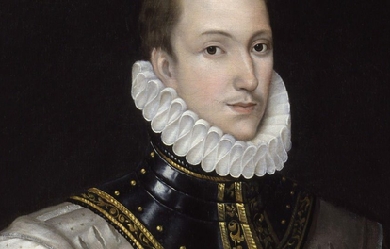
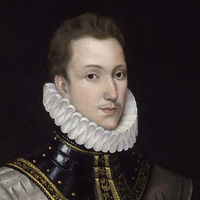
Sir Philip Sidney (30 November 1554– 17 October 1586) was an English poet, courtier, scholar, and soldier, who is remembered as one of the most prominent figures of the Elizabethan age. His works include Astrophel and Stella, The Defence of Poesy (also known as The Defence of Poetry or An Apology for Poetry), and The Countess of Pembroke’s Arcadia. Early life Born at Penshurst Place, Kent, he was the eldest son of Sir Henry Sidney and Lady Mary Dudley. His mother was the eldest daughter of John Dudley, 1st Duke of Northumberland, and the sister of Robert Dudley, 1st Earl of Leicester. His younger brother, Robert was a statesman and patron of the arts, and was created Earl of Leicester in 1618. His younger sister, Mary, married Henry Herbert, 2nd Earl of Pembroke and was a writer, translator and literary patron. Sidney dedicated his longest work, the Arcadia, to her. After her brother’s death, Mary reworked the Arcadia, which became known as The Countess of Pembroke’s Arcadia. Philip was educated at Shrewsbury School and Christ Church, Oxford. Politics and marriage In 1572, in which year he turned 18, he was elected to Parliament as Member of Parliament for Shrewsbury and in the same year travelled to France as part of the embassy to negotiate a marriage between Elizabeth I and the Duc D’Alençon. He spent the next several years in mainland Europe, moving through Germany, Italy, Poland, the Kingdom of Hungary and Austria. On these travels, he met a number of prominent European intellectuals and politicians. Returning to England in 1575, Sidney met Penelope Devereux, the future Lady Rich; though much younger, she would inspire his famous sonnet sequence of the 1580s, Astrophel and Stella. Her father, Walter Devereux, 1st Earl of Essex, is said to have planned to marry his daughter to Sidney, but he died in 1576. In England, Sidney occupied himself with politics and art. He defended his father’s administration of Ireland in a lengthy document. More seriously, he quarrelled with Edward de Vere, 17th Earl of Oxford, probably because of Sidney’s opposition to the French marriage, which de Vere championed. In the aftermath of this episode, Sidney challenged de Vere to a duel, which Elizabeth forbade. He then wrote a lengthy letter to the Queen detailing the foolishness of the French marriage. Characteristically, Elizabeth bristled at his presumption, and Sidney prudently retired from court. During a 1577 diplomatic visit to Prague, Sidney secretly visited the exiled Jesuit priest Edmund Campion. Sidney had returned to court by the middle of 1581 and in 1584 was MP for Kent. That same year Penelope Devereux was married, apparently against her will, to Lord Rich. Sidney was knighted in 1583. An early arrangement to marry Anne Cecil, daughter of Sir William Cecil and eventual wife of de Vere, had fallen through in 1571. In 1583, he married Frances, teenage daughter of Sir Francis Walsingham. In the same year, he made a visit to Oxford University with Giordano Bruno, who subsequently dedicated two books to Sidney. Literary writings His artistic contacts were more peaceful and more significant for his lasting fame. During his absence from court, he wrote Astrophel and Stella and the first draft of The Arcadia and The Defence of Poesy. Somewhat earlier, he had met Edmund Spenser, who dedicated The Shepheardes Calender to him. Other literary contacts included membership, along with his friends and fellow poets Fulke Greville, Edward Dyer, Edmund Spenser and Gabriel Harvey, of the (possibly fictitious) 'Areopagus’, a humanist endeavour to classicise English verse. Military activity Both through his family heritage and his personal experience (he was in Walsingham’s house in Paris during the St. Bartholomew’s Day Massacre), Sidney was a keenly militant Protestant. In the 1570s, he had persuaded John Casimir to consider proposals for a united Protestant effort against the Roman Catholic Church and Spain. In the early 1580s, he argued unsuccessfully for an assault on Spain itself. Promoted General of Horse in 1583, his enthusiasm for the Protestant struggle was given a free rein when he was appointed governor of Flushing in the Netherlands in 1585. In the Netherlands, he consistently urged boldness on his superior, his uncle the Earl of Leicester. He conducted a successful raid on Spanish forces near Axel in July, 1586. Injury and death Later that year, he joined Sir John Norris in the Battle of Zutphen, fighting for the Protestant cause against the Spanish. During the battle, he was shot in the thigh and died of gangrene 26 days later, at the age of 31. As he lay dying, Sidney composed a song to be sung by his deathbed. According to the story, while lying wounded he gave his water to another wounded soldier, saying, “Thy necessity is yet greater than mine”. This became possibly the most famous story about Sir Phillip, intended to illustrate his noble and gallant character. It also inspired evolutionary biologist John Maynard Smith to formulate a problem in signalling theory which is known as the Sir Philip Sidney game. Sidney’s body was returned to London and interred in the Old St. Paul’s Cathedral on 16 February 1587. The grave and monument were destroyed in the Great Fire of London in 1666. A modern monument in the crypt lists him among the important graves lost. Already during his own lifetime, but even more after his death, he had become for many English people the very epitome of a Castiglione courtier: learned and politic, but at the same time generous, brave, and impulsive. The funeral procession was one of the most elaborate ever staged, so much so that his father-in-law, Francis Walsingham, almost went bankrupt. Never more than a marginal figure in the politics of his time, he was memorialised as the flower of English manhood in Edmund Spenser’s Astrophel, one of the greatest English Renaissance elegies. An early biography of Sidney was written by his friend and schoolfellow, Fulke Greville. While Sidney was traditionally depicted as a staunch and unwavering Protestant, recent biographers such as Katherine Duncan-Jones have suggested that his religious loyalties were more ambiguous. Works * The Lady of May– This is one of Sidney’s lesser-known works, a masque written and performed for Queen Elizabeth in 1578 or 1579. * Astrophel and Stella– The first of the famous English sonnet sequences, Astrophel and Stella was probably composed in the early 1580s. The sonnets were well-circulated in manuscript before the first (apparently pirated) edition was printed in 1591; only in 1598 did an authorised edition reach the press. The sequence was a watershed in English Renaissance poetry. In it, Sidney partially nativised the key features of his Italian model, Petrarch: variation of emotion from poem to poem, with the attendant sense of an ongoing, but partly obscure, narrative; the philosophical trappings; the musings on the act of poetic creation itself. His experiments with rhyme scheme were no less notable; they served to free the English sonnet from the strict rhyming requirements of the Italian form. * The Countess of Pembroke’s Arcadia– The Arcadia, by far Sidney’s most ambitious work, was as significant in its own way as his sonnets. The work is a romance that combines pastoral elements with a mood derived from the Hellenistic model of Heliodorus. In the work, that is, a highly idealised version of the shepherd’s life adjoins (not always naturally) with stories of jousts, political treachery, kidnappings, battles, and rapes. As published in the sixteenth century, the narrative follows the Greek model: stories are nested within each other, and different storylines are intertwined. The work enjoyed great popularity for more than a century after its publication. William Shakespeare borrowed from it for the Gloucester subplot of King Lear; parts of it were also dramatised by John Day and James Shirley. According to a widely-told story, King Charles I quoted lines from the book as he mounted the scaffold to be executed; Samuel Richardson named the heroine of his first novel after Sidney’s Pamela. Arcadia exists in two significantly different versions. Sidney wrote an early version (the Old Arcadia) during a stay at Mary Herbert’s house; this version is narrated in a straightforward, sequential manner. Later, Sidney began to revise the work on a more ambitious plan, with much more backstory about the princes, and a much more complicated story line, with many more characters. He completed most of the first three books, but the project was unfinished at the time of his death—the third book breaks off in the middle of a sword fight. There were several early editions of the book. Fulke Greville published the revised version alone, in 1590. The Countess of Pembroke, Sidney’s sister, published a version in 1593, which pasted the last two books of the first version onto the first three books of the revision. In the 1621 version, Sir William Alexander provided a bridge to bring the two stories back into agreement. It was known in this cobbled-together fashion until the discovery, in the early twentieth century, of the earlier version. * An Apology for Poetry (also known as A Defence of Poesie and The Defence of Poetry)– Sidney wrote the Defence before 1583. It is generally believed that he was at least partly motivated by Stephen Gosson, a former playwright who dedicated his attack on the English stage, The School of Abuse, to Sidney in 1579, but Sidney primarily addresses more general objections to poetry, such as those of Plato. In his essay, Sidney integrates a number of classical and Italian precepts on fiction. The essence of his defence is that poetry, by combining the liveliness of history with the ethical focus of philosophy, is more effective than either history or philosophy in rousing its readers to virtue. The work also offers important comments on Edmund Spenser and the Elizabethan stage. * The Sidney Psalms– These English translations of the Psalms were completed in 1599 by Philip Sidney’s sister Mary. In popular culture * A memorial, erected in 1986 at the location where he was mortally wounded by the Spanish, can be found at the entrance of a footpath (" 't Gallee") located in front of the petrol station at the Warnsveldseweg 170. * In Arnhem, in front of the house in the Bakkerstraat 68, an inscription on the ground reads: "IN THIS HOUSE DIED ON THE 17 OCTOBER 1586 * SIR PHILIP SIDNEY * ENGLISH POET, DIPLOMAT AND SOLDIER, FROM HIS WOUNDS SUFFERED AT THE BATTLE OF ZUTPHEN. HE GAVE HIS LIFE FOR OUR FREEDOM". The inscription was unveiled on 17 October 2011, exactly 425 years after his death, in the presence of Philip Sidney, Viscount De L’Isle, a descendant of the brother of Philip Sidney. * The city of Sidney, Ohio, in the United States and a street in Zutphen, Netherlands, have been named after Sir Philip. A statue of him can be found in the park at the Coehoornsingel where, in the harsh winter of 1795, English and Hanoverian soldiers were buried who had died while retreating from advancing French troops. * Another statue of Sidney, by Arthur George Walker, forms the centrepiece of Shrewsbury School’s war memorial to alumni who died serving in World War I (unveiled 1924). * Sidney features as a friend of Giordano Bruno and an agent for Sir Francis Walsingham in the historical crime novels of S J Parris. * W. B. Yeats appears to allude to Sidney as a model of the ideal man in his poem “In Memory of Major Robert Gregory” when he calls Robert Gregory “Our Sidney and our perfect man”. * Sidney is referenced in the T.S. Eliot’s poem “A Cooking Egg”, published in his 1920 poetry collection Aras Vos Prec, where Eliot expresses a desire to speak with Sir Philip in heaven. * An extended sketch from Monty Python’s Flying Circus (Series 3, Episode 10 “E. Henry Thripshaw’s Disease”) featured a police officer, disguised as Sir Philip Sidney, finding himself transported to the Tudor era after raiding a pornography shop. References Wikipedia—https://en.wikipedia.org/wiki/Philip_Sidney
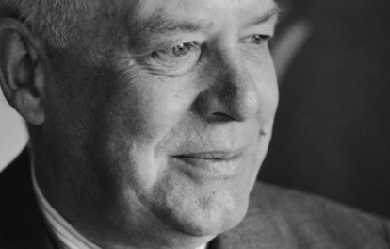
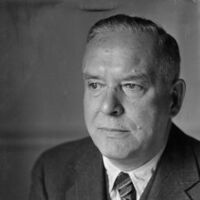
Wallace Stevens was born in Reading, Pennsylvania, on October 2, 1879. He attended Harvard University as an undergraduate from 1897 to 1900. He planned to travel to Paris as a writer, but after a working briefly as a reporter for the New York Herald Times, he decided to study law. He graduated with a degree from New York Law School in 1903 and was admitted to the U.S. Bar in 1904. He practised law in New York City until 1916. Though he had serious determination to become a successful lawyer, Stevens had several friends among the New York writers and painters in Greenwich Village, including the poets William Carlos Williams, Marianne Moore, and E. E. Cummings. In 1914, under the pseudonym "Peter Parasol," he sent a group of poems under the title "Phases" to Harriet Monroe for a war poem competition for Poetry magazine. Stevens did not win the prize, but was published by Monroe in November of that year. Stevens moved to Connecticut in 1916, having found employment at the Hartford Accident and Indemnity Co., of which he became vice president in 1934. He had began to establish an identity for himself outside the world of law and business, however, and his first book of poems, Harmonium, published in 1923, exhibited the influence of both the English Romantics and the French symbolists, an inclination to aesthetic philosophy, and a wholly original style and sensibility: exotic, whimsical, infused with the light and color of an Impressionist painting. For the next several years, Stevens focused on his business life. He began to publish new poems in 1930, however, and in the following year, Knopf published an second edition of Harmonium, which included fourteen new poems and left out three of the decidedly weaker ones. More than any other modern poet, Stevens was concerned with the transformative power of the imagination. Composing poems on his way to and from the office and in the evenings, Stevens continued to spend his days behind a desk at the office, and led a quiet, uneventful life. Though now considered one of the major American poets of the century, he did not receive widespread recognition until the publication of his Collected Poems, just a year before his death. His major works include Ideas of Order (1935), The Man With the Blue Guitar (1937), Notes Towards a Supreme Fiction (1942), and a collection of essays on poetry, The Necessary Angel (1951). Stevens died in Hartford in 1955. Poetry Harmonium (1923) Ideas of Order (1935) Owl's Clover (1936) The Man With the Blue Guitar (1937) Notes Towards a Supreme Fiction (1942) Parts of a World (1942) Esthétique du Mal (1945) Three Academic Pieces (1947) Transport to Summer (1947) Primitive Like an Orb (1948) Auroras of Autumn (1950) Collected Poems (1954) Opus Posthumous (1957) The Palm at the End of the Mind (1967) Prose The Necessary Angel (1951) Plays Three Travellers Watch the Sunrise (1916) Carlos Among the Candles (1917) References Poets.org — http://www.poets.org/poet.php/prmPID/124
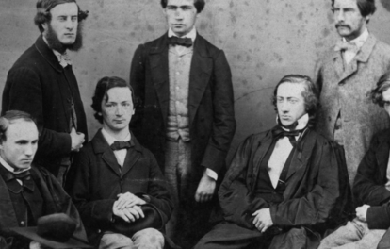
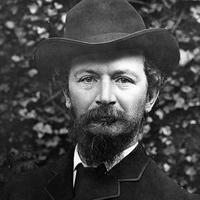
Algernon Charles Swinburne (5 April 1837– 10 April 1909) was an English poet, playwright, novelist, and critic. He wrote several novels and collections of poetry such as Poems and Ballads, and contributed to the famous Eleventh Edition of the Encyclopædia Britannica. A controversial figure at the time, Swinburne was a sado-masochist and alcoholic and was obsessed with the Middle Ages and lesbianism. Swinburne wrote about many taboo topics, such as lesbianism, cannibalism, sado-masochism, and anti-theism. His poems have many common motifs, such as the Ocean, Time, and Death. Several historical people are featured in his poems, such as Sappho ("Sapphics"), Anactoria ("Anactoria"), Jesus ("Hymn to Proserpine": Galilaee, La. “Galilean”) and Catullus ("To Catullus"). Biography Swinburne was born at 7 Chester Street, Grosvenor Place, London, on 5 April 1837. He was the eldest of six children born to Captain (later Admiral) Charles Henry Swinburne (1797–1877) and Lady Jane Henrietta, daughter of the 3rd Earl of Ashburnham. He grew up at East Dene in Bonchurch on the Isle of Wight. He attended Eton College (1849–53), where he first started writing poetry, and then Balliol College, Oxford (1856–60) with a brief hiatus when he was rusticated from the university in 1859 for having publicly supported the attempted assassination of Napoleon III by Felice Orsini. He returned in May 1860, though he never received a degree. He spent summer holidays at Capheaton Hall in Northumberland, the house of his grandfather, Sir John Swinburne, 6th Baronet (1762–1860), who had a famous library and was President of the Literary and Philosophical Society in Newcastle upon Tyne. Swinburne considered Northumberland to be his native county, an emotion reflected in poems like the intensely patriotic 'Northumberland’, 'Grace Darling’ and others. He enjoyed riding his pony across the moors (he was a daring horseman) 'through honeyed leagues of the northland border’, as he called the Scottish border in his Recollections. In the period 1857–60, Swinburne became one of Lady Pauline Trevelyan’s intellectual circle at Wallington Hall. After his grandfather’s death in 1860, he stayed with William Bell Scott in Newcastle. In 1861, Swinburne visited Menton on the French Riviera to recover from excessive use of alcohol, staying at the Villa Laurenti. From Menton, Swinburne travelled to Italy, where he journeyed extensively. In December 1862, Swinburne accompanied Scott and his guests, probably including Dante Gabriel Rossetti, on a trip to Tynemouth. Scott writes in his memoirs that, as they walked by the sea, Swinburne declaimed the as yet unpublished 'Hymn to Proserpine’ and 'Laus Veneris’ in his lilting intonation, while the waves 'were running the whole length of the long level sands towards Cullercoats and sounding like far-off acclamations’. At Oxford, Swinburne met several Pre-Raphaelites, including Dante Gabriel Rossetti. He also met William Morris. After leaving college, he lived in London and started an active writing career, where Rossetti was delighted with his 'little Northumbrian friend’, probably a reference to Swinburne’s diminutive height—he was just five foot four. Swinburne was an alcoholic and algolagniac and highly excitable. He liked to be flogged. His health suffered; and, in 1879 at the age of 42, he was taken into care by his friend, lawyer Theodore Watts, who looked after him for the rest of his life at The Pines, 11 Putney Hill, Putney SW15. Thereafter, he lost his youthful rebelliousness and developed into a figure of social respectability. It was said of Watts that he saved the man and killed the poet. Swinburne died at the Pines on 10 April 1909 at the age of 72 and was buried at St. Boniface Church, Bonchurch on the Isle of Wight. Reception Swinburne is considered a poet of the decadent school, although he perhaps professed to more vice than he actually indulged in to advertise his deviance– he spread a rumour that he had had sex with, then eaten, a monkey; Oscar Wilde stated that Swinburne was “a braggart in matters of vice, who had done everything he could to convince his fellow citizens of his homosexuality and bestiality without being in the slightest degree a homosexual or a bestialiser.” Many critics consider his mastery of vocabulary, rhyme and metre impressive, although he has also been criticised for his florid style and word choices that only fit the rhyme scheme rather than contributing to the meaning of the piece. He is the virtual star of the third volume of George Saintsbury’s famous History of English Prosody, and A. E. Housman, a more measured and even somewhat hostile critic, had great praise for his rhyming ability: [Swinburne] possessed an altogether unexampled command of rhyme, the chief enrichment of modern verse. The English language is comparatively poor in rhymes, and most English poets, when they have to rhyme more than two or three words together, betray their embarrassment. They betray it, for instance, when they write sonnets after the strict Petrarchian rule: the poetical inferiority of most English sonnets, if compared with what their own authors have achieved in other forms of verse, is largely though not entirely the result of this difficulty. [...] To Swinburne the sonnet was child’s play: the task of providing four rhymes was not hard enough, and he wrote long poems in which each stanza required eight or ten rhymes, and wrote them so that he never seemed to be saying anything for the rhyme’s sake. Swinburne’s work was once quite popular among undergraduates at Oxford and Cambridge, though today it has gone out of fashion. This is at least somewhat contextual, as it tends to mirror the popular and academic consensus regarding his work, although his Poems and Ballads, First Series and his Atalanta in Calydon have never been out of critical favour. Atalanta in Calydon in particular has been lauded as one of his best early works, written in 1865, before the passionate excesses of later works earned him a sordid reputation for blasphemy and depravity among contemporary critics. T. S. Eliot read Swinburne’s essays on the Shakespearean and Jonsonian dramatists in The Contemporaries of Shakespeare and The Age of Shakespeare and Swinburne’s books on Shakespeare and Jonson. Writing on Swinburne in 'The Sacred Wood: Essays on Poetry and Criticism’, Eliot said, of Swinburne, he had mastered his material, writing 'he is more reliable to them than Hazlitt, Coleridge, or Lamb: and his perception of relative values is almost always correct’. However, Eliot judged Swinburne did not master it to the extent of being able to take liberties with it, which is everything. Furthermore, Eliot disliked Swinburne’s prose, about which he wrote “the tumultuous outcry of adjectives, the headstrong rush of undisciplined sentences, are the index to the impatience and perhaps laziness of a disorderly mind.” Swinburne was nominated for the Nobel Prize in Literature every year from 1903 to 1907 and again in 1909. H. P. Lovecraft considered Swinburne “the only real poet in either England or America after the death of Mr. Edgar Allan Poe.” Work Swinburne’s poetic works include: Atalanta in Calydon (1865), Poems and Ballads (1866), Songs before Sunrise (1871), Poems and Ballads Second Series, (1878) Tristram of Lyonesse (1882), Poems and Ballads Third Series (1889), and the novel Lesbia Brandon (published posthumously in 1952). Poems and Ballads caused a sensation when it was first published, especially the poems written in homage of Sappho of Lesbos such as “Anactoria” and “Sapphics”: Moxon and Co. transferred its publication rights to John Camden Hotten. Other poems in this volume such as “The Leper,” “Laus Veneris,” and “St Dorothy” evoke a Victorian fascination with the Middle Ages, and are explicitly mediaeval in style, tone and construction. Also featured in this volume are “Hymn to Proserpine”, “The Triumph of Time” and “Dolores (Notre-Dame des Sept Douleurs)”. Swinburne devised the poetic form called the roundel, a variation of the French Rondeau form, and some were included in A Century of Roundels dedicated to Christina Rossetti. Swinburne wrote to Edward Burne-Jones in 1883: "I have got a tiny new book of songs or songlets, in one form and all manner of metres... just coming out, of which Miss Rossetti has accepted the dedication. I hope you and Georgie [his wife Georgiana, one of the MacDonald sisters] will find something to like among a hundred poems of nine lines each, twenty-four of which are about babies or small children". Opinions of these poems vary between those who find them captivating and brilliant, to those who find them merely clever and contrived. One of them, A Baby’s Death, was set to music by the English composer Sir Edward Elgar as the song Roundel: The little eyes that never knew Light. Swinburne was influenced by the work of William Shakespeare, Percy Bysshe Shelley, Catullus, William Morris, Dante Gabriel Rossetti, Robert Browning, Alfred Lord Tennyson, and Victor Hugo. While he was popular in England during his life, Swinburne’s influence has greatly decreased since his death. After the first Poems and Ballads, Swinburne’s later poetry was devoted more to philosophy and politics, including the unification of Italy, particularly in the volume Songs before Sunrise. He did not stop writing love poetry entirely, including his great epic-length poem, Tristram of Lyonesse, but its content is much less shocking. His versification, and especially his rhyming technique, remain in top form to the end. Verse drama The Queen Mother (1860) Rosamond (1860) Chastelard (1865) Bothwell (1874) Mary Stuart (1881) Marino Faliero (1885) Locrine (1887) The Sisters (1892) Rosamund, Queen of the Lombards (1899) Poetry Atalanta in Calydon (1865)† Poems and Ballads (1866) Songs Before Sunrise (1871) Songs of Two Nations (1875) Erechtheus (1876)† Poems and Ballads, Second Series (1878) Songs of the Springtides (1880) Studies in Song (1880) The Heptalogia, or the Seven against Sense. A Cap with Seven Bells (1880) Tristam of Lyonesse (1882) A Century of Roundels (1883) A Midsummer Holiday and Other Poems (1884) Poems and Ballads, Third Series (1889) Astrophel and Other Poems (1894) The Tale of Balen (1896) A Channel Passage and Other Poems (1904) ^† Although formally tragedies, Atlanta in Calydon and Erechtheus are traditionally included with “poetry”. Criticism William Blake: A Critical Essay (1868, new edition 1906) Under the Microscope (1872) George Chapman: A Critical Essay (1875) Essays and Studies (1875) A Note on Charlotte Brontë (1877) A Study of Shakespeare (1880) A Study of Victor Hugo (1886) A Study of Ben Johnson (1889) Studies in Prose and Poetry (1894) The Age of Shakespeare (1908) Shakespeare (1909) Major collections The poems of Algernon Charles Swinburne, 6 vols. London: Chatto & Windus, 1904. The Tragedies of Algernon Charles Swinburne, 5 vols. London: Chatto & Windus, 1905. The Complete Works of Algernon Charles Swinburne, ed. Sir Edmund Gosse and Thomas James Wise, 20 vols. Bonchurch Edition; London and New York: William Heinemann and Gabriel Wells, 1925-7. The Swinburne Letters, ed. Cecil Y. Lang, 6 vols. 1959-62. Ancestry References Wikipedia—https://en.wikipedia.org/wiki/Algernon_Charles_Swinburne
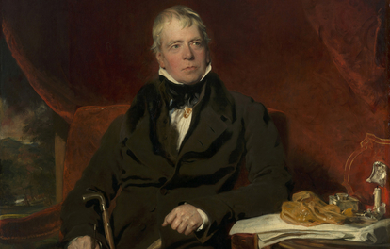
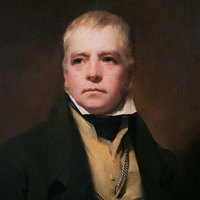
Sir Walter Scott, 1st Baronet, FRSE (15 August 1771– 21 September 1832) was a Scottish historical novelist, playwright and poet with many contemporary readers in Europe, Australia, and North America. Scott’s novels and poetry are still read, and many of his works remain classics of both English-language literature and of Scottish literature. Famous titles include Ivanhoe, Rob Roy, Old Mortality, The Lady of the Lake, Waverley, The Heart of Midlothian and The Bride of Lammermoor.

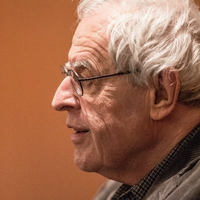
Charles Simic (born Dušan Simić; May 9, 1938) is a Serbian-American poet and was co-poetry editor of the Paris Review. He received the Pulitzer Prize for Poetry in 1990 for The World Doesn’t End, and was a finalist of the Pulitzer Prize in 1986 for Selected Poems, 1963-1983 and in 1987 for Unending Blues. He was appointed the fifteenth Poet Laureate Consultant in Poetry to the Library of Congress in 2007. Biography Early years Dušan Simić was born in Belgrade. In his early childhood, during World War II, he and his family were forced to evacuate their home several times to escape indiscriminate bombing of Belgrade. Growing up as a child in war-torn Europe shaped much of his world-view, Simic states. In an interview from the Cortland Review he said, “Being one of the millions of displaced persons made an impression on me. In addition to my own little story of bad luck, I heard plenty of others. I’m still amazed by all the vileness and stupidity I witnessed in my life.” Simic immigrated to the United States with his brother and mother in order to join his father in 1954 when he was sixteen. He grew up in Chicago. In 1961 he was drafted into the U.S. Army, and in 1966 he earned his B.A. from New York University while working at night to cover the costs of tuition. He is professor emeritus of American literature and creative writing at the University of New Hampshire, where he has taught since 1973 and lives on the shore of Bow Lake in Strafford, New Hampshire. Career He began to make a name for himself in the early to mid-1970s as a literary minimalist, writing terse, imagistic poems. Critics have referred to Simic’s poems as “tightly constructed Chinese puzzle boxes”. He himself stated: “Words make love on the page like flies in the summer heat and the poet is merely the bemused spectator.” Simic writes on such diverse topics as jazz, art, and philosophy. He is a translator, essayist and philosopher, opining on the current state of contemporary American poetry. He held the position of poetry editor of The Paris Review and was replaced by Dan Chiasson. He was elected to The American Academy of Arts and Letters in 1995, received the Academy Fellowship in 1998, and was elected a Chancellor of the Academy of American Poets in 2000. Simic was one of the judges for the 2007 Griffin Poetry Prize and continues to contribute poetry and prose to The New York Review of Books. Simic received the US$100,000 Wallace Stevens Award in 2007 from the Academy of American Poets. He was selected by James Billington, Librarian of Congress, to be the fifteenth Poet Laureate Consultant in Poetry to the Library of Congress, succeeding Donald Hall. In choosing Simic as the poet laureate, Billington cited “the rather stunning and original quality of his poetry”. In 2011, he was the recipient of the Frost Medal, presented annually for “lifetime achievement in poetry.” Awards * PEN Translation Prize (1980) * Ingram Merrill Foundation Fellowship (1983) * MacArthur Fellowship (1984–1989) * Pulitzer Prize finalist (1986) * Pulitzer Prize finalist (1987) * Pulitzer Prize for Poetry (1990) * Wallace Stevens Award (2007) * Frost Medal (2011) * Vilcek Prize in Literature (2011) * The Zbigniew Herbert International Literary Award (2014) * Golden Wreath of the Struga Poetry Evenings (2017) Bibliography References Wikipedia—https://en.wikipedia.org/wiki/Charles_Simic
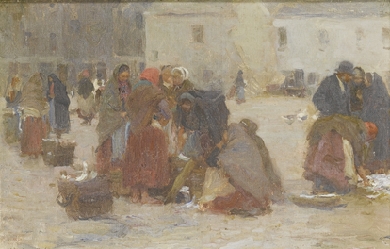
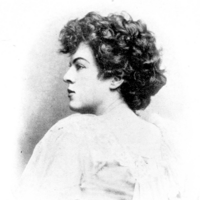
Dora Maria Sigerson Shorter (16 August 1866– 6 January 1918) was an Irish poet and sculptor, who after her marriage in 1895 wrote under the name Dora Sigerson Shorter. She was born in Dublin, Ireland, the daughter of George Sigerson, a surgeon and writer, and Hester (née Varian), also a writer. She was a major figure of the Irish Literary Revival, publishing many collections of poetry from 1893. Her friends included Katharine Tynan, Rose Kavanagh and Alice Furlong, writers and poets. In 1895 she married Clement King Shorter, an English journalist and literary critic. They lived together in London, until her death at age 51 from undisclosed causes.
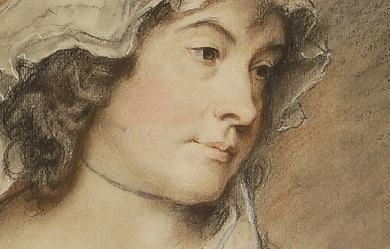
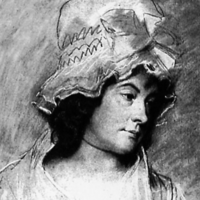
Charlotte Turner Smith (4 May 1749– 28 October 1806) was an English Romantic poet and novelist. She initiated a revival of the English sonnet, helped establish the conventions of Gothic fiction, and wrote political novels of sensibility. Smith was born into a wealthy family and received a typical education for a woman during the late 18th century. However, her father’s reckless spending forced her to marry early. In a marriage that she later described as prostitution, she was given by her father to the violent and profligate Benjamin Smith. Their marriage was deeply unhappy, although they had twelve children together. Charlotte joined Benjamin in debtor’s prison, where she wrote her first book of poetry, Elegiac Sonnets. Its success allowed her to help pay for Benjamin’s release. Benjamin’s father attempted to leave money to Charlotte and her children upon his death, but legal technicalities prevented her from ever acquiring it. Charlotte Smith eventually left Benjamin and began writing to support their children. Smith’s struggle to provide for her children and her frustrated attempts to gain legal protection as a woman provided themes for her poetry and novels; she included portraits of herself and her family in her novels as well as details about her life in her prefaces. Her early novels are exercises in aesthetic development, particularly of the Gothic and sentimentality. “The theme of her many sentimental and didactic novels was that of a badly married wife helped by a thoughtful sensible lover” (Smith’s entry in British Authors Before 1800: A Biographical Dictionary Ed. Stanley Kunitz and Howard Haycraft. New York: H.W. Wilson, 1952. pg. 478.) Her later novels, including The Old Manor House, often considered her best, support the ideals of the French Revolution. Smith was a successful writer, publishing ten novels, three books of poetry, four children’s books, and other assorted works, over the course of her career. She always saw herself as a poet first and foremost, however, as poetry was considered the most exalted form of literature at the time. Scholars credit Smith with transforming the sonnet into an expression of woeful sentiment that would pave the way for poets such as Coleridge, Wordsworth, Shelly and Keats. Smith’s poetry and prose was praised by contemporaries such as Romantic poets William Wordsworth and Samuel Taylor Coleridge as well as novelist Walter Scott. Coleridge, in 1796, even remarked that “those sonnets appear to me the most exquisite, in which moral Sentiments, Affections, or Feelings, are deduced from, and associated with the scenery of Nature”. After 1798, Smith’s popularity waned and by 1803 she was destitute and ill—she could barely hold a pen. She had to sell her books to pay off her debts. In 1806, Smith died. Largely forgotten by the middle of the 19th century, her works have now been republished and she is recognized as an important Romantic writer. Early life Smith was born on 4 May 1749 in London and baptized on 12 June; she was the oldest child of well-to-do Nicholas Turner and Anna Towers. Her two younger siblings, Nicholas and Catherine Ann, were born within the next five years. Smith’s childhood was shaped by her mother’s early death (probably in giving birth to Catherine) and her father’s reckless spending. After losing his wife, Nicholas Turner travelled and the children were raised by Lucy Towers, their maternal aunt (when exactly their father returned is unknown). At the age of six, Charlotte went to school in Chichester and took drawing lessons from the painter George Smith. Two years later, she, her aunt, and her sister moved to London and she attended a girls school in Kensington where she learned dancing, drawing, music, and acting. She loved to read and wrote poems, which her father encouraged. She even submitted a few to the Lady’s Magazine for publication, but they were not accepted. Marriage and first publication Smith’s father encountered financial difficulties upon his return to England and he was forced to sell some of the family’s holdings and to marry the wealthy Henrietta Meriton in 1765. Smith entered society at the age of twelve, leaving school and being tutored at home. On 23 February 1765, at the age of fifteen, she married Benjamin Smith, the son of Richard Smith, a wealthy West Indian merchant and a director of the East India Company. The proposal was accepted for her by her father; forty years later, Smith condemned her father’s action, which she wrote had turned her into a “legal prostitute”. Smith’s marriage was unhappy. She detested living in commercial Cheapside (the family later moved to Southgate and Tottenham) and argued with her in-laws, who she believed were unrefined and uneducated. They, in turn, mocked her for spending time reading, writing, and drawing. Even worse, Benjamin proved to be violent, unfaithful, and profligate. Only her father-in-law, Richard, appreciated her writing abilities, although he wanted her to use them to further his business interests. Richard Smith owned plantations in Barbados and he and his second wife brought five slaves to England, who, along with their descendants, were included as part of the family property in his will. Although Charlotte Smith later argued against slavery in works such as The Old Manor House (1793) and “Beachy Head”, she herself benefited from the income and slave labor of Richard Smith’s plantations. In 1766, Charlotte and Benjamin had their first child, who died the next year just days after the birth of their second, Benjamin Berney (1767–77). Between 1767 and 1785, the couple had ten more children: William Towers (born 1768), Charlotte Mary (born c. 1769), Braithwaite (born 1770), Nicholas Hankey (1771–1837), Married Anni Petroose (1779–1843), Charles Dyer (born 1773), Anna Augusta (1774–94), Lucy Eleanor (born 1776), Lionel (1778–1842), Harriet (born c. 1782), and George (born c. 1785). Only six of Smith’s children survived her. Smith assisted in the family business that her husband had abandoned by helping Richard Smith with his correspondence. She persuaded Richard to set Benjamin up as a gentleman farmer in Hampshire and lived with him at Lys Farm from 1774 until 1783. Worried about Charlotte’s future and that of his grandchildren and concerned that his son would continue his irresponsible ways, Richard Smith willed the majority of his property to Charlotte’s children. However, because he had drawn up the will himself, the documents contained legal problems. The inheritance, originally worth nearly £36,000, was tied up in chancery after his death in 1776 for almost forty years. Smith and her children saw little of it. (It has been proposed that this real case may have inspired the famous fictional case of Jarndyce and Jarndyce, in Dickens’s Bleak House.) In fact, Benjamin illegally spent at least a third of the legacy and ended up in King’s Bench Prison in December 1783. Smith moved in with him and it was in this environment that she wrote and published her first work, Elegiac Sonnets (1784). Elegiac Sonnets achieved instant success, allowing Charlotte to pay for their release from prison. Smith’s sonnets helped initiate a revival of the form and granted an aura of respectability to her later novels (poetry was considered the highest art form at the time). Smith revised Elegiac Poems several times over the years, eventually creating a two-volume work. Novelist After Benjamin Smith was released from prison, the entire family moved to Dieppe, France to avoid further creditors. Charlotte returned to negotiate with them, but failed to come to an agreement. She went back to France and in 1784 began translating works from French into English. In 1787 she published The Romance of Real Life, consisting of translated selections from François Gayot de Pitaval’s trials. She was forced to withdraw her other translation, Manon Lescaut, after it was argued that the work was immoral and plagiarized. In 1786, she published it anonymously. In 1785, the family returned to England and moved to Woolbeding House near Midhurst, Sussex. Smith’s relationship with her husband did not improve and on 15 April 1787, after twenty-two years of marriage, she left him. She wrote that she might “have been contented to reside in the same house with him”, had not “his temper been so capricious and often so cruel” that her “life was not safe”. When Charlotte left Benjamin, she did not secure a legal agreement that would protect her profits—he would have access to them under English primogeniture laws. Smith knew that her children’s future rested on a successful settlement of the lawsuit over her father-in-law’s will, therefore she made every effort to earn enough money to fund the suit and retain the family’s genteel status. Smith claimed the position of gentlewoman, signing herself “Charlotte Smith of Bignor Park” on the title page of Elegiac Sonnets. All of her works were published under her own name, “a daring decision” for a woman at the time. Her success as a poet allowed her to make this choice. Throughout her career, Smith identified herself as a poet. Although she published far more prose than poetry and her novels brought her more money and fame, she believed poetry would bring her respectability. As Sarah Zimmerman claimed in the Oxford Dictionary of National Biography, “She prized her verse for the role it gave her as a private woman whose sorrows were submitted only reluctantly to the public.” After separating from her husband, Smith moved to a town near Chichester and decided to write novels, as they would make her more money than poetry. Her first novel, Emmeline (1788), was a success, selling 1500 copies within months. She wrote nine more novels in the next ten years: Ethelinde (1789), Celestina (1791), Desmond (1792), The Old Manor House (1793), The Wanderings of Warwick (1794), The Banished Man (1794), Montalbert (1795), Marchmont (1796), and The Young Philosopher (1798). Smith began her career as a novelist during the 1780s at a time when women’s fiction was expected to focus on romance and to foreground “a chaste and flawless heroine subjected to repeated melodramatic distresses until reinstated in society by the virtuous hero”. Although Smith’s novels employed this structure, they also incorporated political commentary, particularly support of the French Revolution, through the voices of male characters. At times, she challenged the typical romance plot by including “narratives of female desire” or “tales of females suffering despotism”. Smith’s novels contributed to the development of Gothic fiction and the novel of sensibility. Smith’s novels are autobiographical. While a common device at the time, Antje Blank writes in The Literary Encyclopedia, “few exploited fiction’s potential of self-representation with such determination as Smith”. For example, Mr. and Mrs. Stafford in Emmeline are portraits of Charlotte and Benjamin. The prefaces to Smith’s novels told the story of her own struggles, including the deaths of several of her children. According to Zimmerman, "Smith mourned most publicly for her daughter Anna Augusta, who married an émigré... and died aged twenty in 1795." Smith’s prefaces positioned her as both a suffering sentimental heroine as well as a vocal critic of the laws that kept her and her children in poverty. Smith’s experiences prompted her to argue for legal reforms that would grant women more rights, making the case for these reforms through her novels. Smith’s stories showed the “legal, economic, and sexual exploitation” of women by marriage and property laws. Initially readers were swayed by her arguments and writers such as William Cowper patronized her. However, as the years passed, readers became exhausted by Smith’s stories of struggle and inequality. Public opinion shifted towards the view of poet Anna Seward, who argued that Smith was “vain” and “indelicate” for exposing her husband to “public contempt”. Smith moved frequently due to financial concerns and declining health. During the last twenty years of her life, she lived in: Chichester, Brighton, Storrington, Bath, Exmouth, Weymouth, Oxford, London, Frant, and Elstead. She eventually settled at Tilford, Surrey. Smith became involved with English radicals while she was living in Brighton from 1791 to 1793. Like them, she supported the French Revolution and its republican principles. Her epistolary novel Desmond tells the story of a man who journeys to revolutionary France and is convinced of the rightness of the revolution and contends that England should be reformed as well. The novel was published in June 1792, a year before France and England went to war and before the Reign of Terror began, which shocked the British public, turning them against the revolutionaries. Like many radicals, Smith criticized the French, but she still endorsed the original ideals of the revolution. In order to support her family, Smith had to sell her works, thus she was eventually forced to, as Blank claims, “tone down the radicalism that had characterised the authorial voice in Desmond and adopt more oblique techniques to express her libertarian ideals”. She therefore set her next novel, The Old Manor House (1793), during the American Revolutionary War, which allowed her to discuss democratic reform without directly addressing the French situation. However, in her last novel, The Young Philosopher (1798), Smith wrote a final piece of “outspoken radical fiction”. Smith’s protagonist leaves Britain for America, as there is no hope for a reform in Britain. The Old Manor House is "frequently deemed [Smith’s] best" novel for its sentimental themes and development of minor characters. Novelist Walter Scott labeled it as such and poet and critic Anna Laetitia Barbauld chose it for her anthology of The British Novelists (1810). As a successful novelist and poet, Smith communicated with famous artists and thinkers of the day, including musician Charles Burney (father of Frances Burney), poet Samuel Taylor Coleridge, scientist and poet Erasmus Darwin, lawyer and radical Thomas Erskine, novelist Mary Hays, playwright Richard Brinsley Sheridan, and poet Robert Southey. A wide array of periodicals reviewed her works, including the Anti-Jacobin Review, the Analytical Review, the British Critic, The Critical Review, the European Magazine, the Gentleman’s Magazine, the Monthly Magazine, and the Universal Magazine. Smith earned the most money between 1787 and 1798, after which she was no longer as popular; several reasons have been suggested for the public’s declining interest in Smith, including “a corresponding erosion of the quality of her work after so many years of literary labour, an eventual waning of readerly interest as she published, on average, one work per year for twenty-two years, and a controversy that attached to her public profile” as she wrote about the French revolution. Both radical and conservative periodicals criticized her novels about the revolution. Her insistence on pursuing the lawsuit over Richard Smith’s inheritance lost her several patrons. Also, her increasingly blunt prefaces made her less appealing to the public. In order to continue earning money, Smith began writing in less politically charged genres. She published a collection of tales, Letters of a Solitary Wanderer (1801–02) and the play What Is She? (1799, attributed). Her most successful new foray was into children’s literature: Rural Walks (1795), Rambles Farther (1796), Minor Morals (1798), and Conversations Introducing Poetry (1804). She also wrote two volumes of a history of England (1806) and A Natural History of Birds (1807, posthumous). She also returned to writing poetry and Beachy Head and Other Poems (1807) was published posthumously. Publishers did not pay as much for these works, however, and by 1803, Smith was poverty-stricken. She could barely afford food and had no coal. She even sold her beloved library of 500 books in order to pay off debts, but feared being sent to jail for the remaining £20. Illness and death Smith complained of gout for many years (it was probably rheumatoid arthritis), which made it increasingly difficult and painful for her to write. By the end of her life, it had almost paralyzed her. She wrote to a friend that she was “literally vegetating, for I have very little locomotive powers beyond those that appertain to a cauliflower”. On 23 February 1806, her husband died in a debtors’ prison and Smith finally received some of the money he owed her, but she was too ill to do anything with it. She died a few months later, on 28 October 1806, at Tilford and was buried at Stoke Church, Stoke Park, near Guildford. The lawsuit over her father-in-law’s estate was settled seven years later, on 22 April 1813, more than thirty-six years after Richard Smith’s death. Legacy Stuart Curran, the editor of Smith’s poems, has written that Smith is “the first poet in England whom in retrospect we would call Romantic”. She helped shape the “patterns of thought and conventions of style” for the period. Romantic poet William Wordsworth was the most affected by her works. He said of Smith in the 1830s that she was “a lady to whom English verse is under greater obligations than are likely to be either acknowledged or remembered”. By the second half of the 19th century, Smith was largely forgotten. Smith’s novels were republished again at the end of the 20th century, and “critics interested in the period’s women poets and prose writers, the Gothic novel, the historical novel, the social problem novel, and post-colonial studies” have argued for her significance as a writer. They looked to the contemporary documentation of her importance, discovering that she helped to revitalize the English sonnet, a fact recognized by Coleridge and others. Scott wrote that she “preserves in her landscapes the truth and precision of a painter” and poet and Barbauld claimed that Smith was the first to include sustained natural description in novels. It was not until 2008 however, that Smith’s entire prose collection became available to the general public. The edition contains each novel, the children’s stories and rural walks.
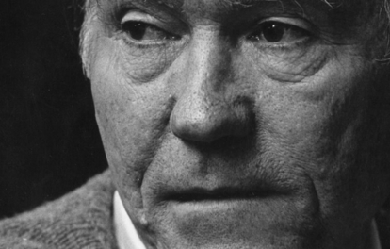
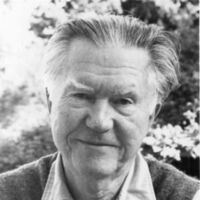
William Edgar Stafford (January 17, 1914 – August 28, 1993) was an American poet and pacifist, and the father of poet and essayist Kim Stafford. He was appointed the twentieth Consultant in Poetry to the Library of Congress in 1970. Early years Stafford was born in Hutchinson, Kansas, the oldest of three children in a highly literate family. During the Depression, his family moved from town to town in an effort to find work for his father. Stafford helped contribute to family income by delivering newspapers, working in sugar beet fields, raising vegetables, and working as an electrician's apprentice. During this time he had a near death experience in a local swimming hole. He graduated from high school in the town of Liberal, Kansas in 1933. After attending junior college, he received a B.A. from the University of Kansas in 1937. He was drafted into the United States armed forces in 1941, while pursuing his master's degree at the University of Kansas, but declared himself a conscientious objector. As a registered pacifist, he performed alternative service from 1942 to 1946 in the Civilian Public Service camps. The work consisted of forestry and soil conservation work in Arkansas, California, and Illinois for $2.50 per month. While working in California in 1944, he met and married Dorothy Hope Frantz with whom he later had four children (Bret, who died in 1988; Kim, writer; Kit, artist; Barbara, artist). He received his M.A. from the University of Kansas in 1947. His master's thesis, the prose memoir Down In My Heart, was published in 1948 and described his experience in the forest service camps. That same year he moved to Oregon to teach at Lewis & Clark College. In 1954, he received a Ph.D. from the University of Iowa. Stafford taught for one academic year (1955–1956) in the English department at Manchester College in Indiana, a college affiliated with the Church of the Brethren where he had received training during his time in Civilian Public Service. The following year (1956–57), he taught at San Jose State in California, and the next year returned to the faculty of Lewis & Clark. Career One striking feature of his career is its late start. Stafford was 46 years old when his first major collection of poetry was published, Traveling Through the Dark, which won the 1963 National Book Award for Poetry. The title poem is one of his best known works. It describes encountering a recently killed doe on a mountain road. Before pushing the doe into a canyon, the narrator discovers that she was pregnant and the fawn inside is still alive. Stafford had a quiet daily ritual of writing and his writing focuses on the ordinary. His gentle quotidian style has been compared to Robert Frost. Paul Merchant writes, "His poems are accessible, sometimes deceptively so, with a conversational manner that is close to everyday speech. Among predecessors whom he most admired are William Wordsworth, Thomas Hardy, Walt Whitman, and Emily Dickinson." His poems are typically short, focusing on the earthy, accessible details appropriate to a specific locality. Stafford said this in a 1971 interview: I keep following this sort of hidden river of my life, you know, whatever the topic or impulse which comes, I follow it along trustingly. And I don't have any sense of its coming to a kind of crescendo, or of its petering out either. It is just going steadily along. Stafford was a close friend and collaborator with poet Robert Bly. Despite his late start, he was a frequent contributor to magazines and anthologies and eventually published fifty-seven volumes of poetry. James Dickey called Stafford one of those poets "who pour out rivers of ink, all on good poems."[6] He kept a daily journal for 50 years, and composed nearly 22,000 poems, of which roughly 3,000 were published. In 1970, he was named Consultant in Poetry to the Library of Congress, a position that is now known as Poet Laureate. In 1975, he was named Poet Laureate of Oregon; his tenure in the position lasted until 1990. In 1980, he retired from Lewis & Clark College but continued to travel extensively and give public readings of his poetry. In 1992, he won the Western States Book Award for lifetime achievement in poetry. Death Stafford died of a heart attack in Lake Oswego, Oregon on August 28, 1993, having written a poem that morning containing the lines, "'You don't have to / prove anything,' my mother said. 'Just be ready / for what God sends.'" In 2008, the Stafford family gave William Stafford's papers, including the 20,000 pages of his daily writing, to the Special Collections Department at Lewis & Clark College. Kim Stafford, who serves as literary executor for the Estate of William Stafford, has written a memoir Early Morning: Remembering My Father, William Stafford (Graywolf Press). References Wikipedia—http://en.wikipedia.org/wiki/William_Stafford_(poet)

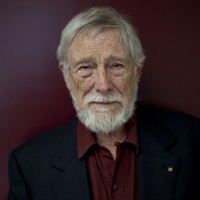
Gary Snyder (born May 8, 1930) is an American man of letters. Perhaps best known as a poet (often associated with the Beat Generation and the San Francisco Renaissance), he is also an essayist, lecturer, and environmental activist. He has been described as the "poet laureate of Deep Ecology". Snyder is a winner of a Pulitzer Prize for Poetry and the American Book Award. His work, in his various roles, reflects an immersion in both Buddhist spirituality and nature. Snyder has translated literature into English from ancient Chinese and modern Japanese. For many years, Snyder served as a faculty member at the University of California, Davis, and he also served for a time on the California Arts Council. Early life Gary Sherman Snyder was born in San Francisco, California to Harold and Lois Hennessy Snyder. Snyder is of German, Scots-Irish, and English ancestry. His family, impoverished by the Great Depression, moved to King County, Washington, when he was two years old. There they tended dairy cows, kept laying hens, had a small orchard, and made cedar-wood shingles, until moving to Portland, Oregon ten years later. At the age of seven, Snyder was laid up for four months by an accident. "So my folks brought me piles of books from the Seattle Public Library," he recalled in interview, "and it was then I really learned to read and from that time on was voracious — I figure that accident changed my life. At the end of four months, I had read more than most kids do by the time they're eighteen. And I didn't stop." Also during his ten childhood years in Washington, Snyder became aware of the presence of the Coast Salish people and developed an interest in the Native American peoples in general and their traditional relationship with nature. In 1942, following his parents' divorce, Snyder moved to Portland, Oregon with his mother and his younger sister, Anthea. Their mother, Lois Snyder Hennessy (born Wilkey), worked during this period as a reporter for The Oregonian. One of Gary's boyhood jobs was as a newspaper copy boy, also at the Oregonian. Also, during his teen years, he attended Lincoln High School, worked as a camp counselor, and went mountain climbing with the Mazamas youth group. Climbing remained an interest of his, especially during his twenties and thirties. In 1947, he started attending Reed College on a scholarship. Here he met, and for a time, roomed with the education author Carl Proujan and Philip Whalen and Lew Welch. At Reed, Snyder published his first poems in a student journal. He also spent the summer of 1948 working as a seaman. He joined the now defunct Marine Cooks and Stewards union to get this job, and would later work as a seaman in the mid-1950s to gain experience of other cultures in port cities. Snyder married Alison Gass in 1950; they separated after seven months, and divorced in 1952. While attending Reed, Snyder did folklore research on the Warm Springs Indian Reservation in central Oregon. He graduated with a dual degree in anthropology and literature in 1951. He spent the following few summers working as a timber scaler at Warm Springs, developing relationships with its people that were less rooted in academia. This experience formed the basis for some of his earliest published poems (including "A Berry Feast"), later collected in the book The Back Country. He also encountered the basic ideas of Buddhism and, through its arts, some of the Far East's traditional attitudes toward nature. He went to Indiana University with a graduate fellowship to study anthropology. (Snyder also began practicing self-taught Zen meditation.) He left after a single semester to return to San Francisco and to 'sink or swim as a poet'. Snyder worked for two summers in the North Cascades in Washington as a fire lookout, on Crater Mountain in 1952 and Sourdough Mountain in 1953 (both locations on the upper Skagit River). His attempts to get another lookout stint in 1954 (at the peak of McCarthyism), however, failed. He had been barred from working for the government, due to his association with the Marine Cooks and Stewards. Instead, he went back to Warm Springs to work in logging as a chokersetter (fastening cables to logs). This experience contributed to his Myths and Texts and the essay Ancient Forests of the Far West. The Beats Back in San Francisco, Snyder lived with Whalen, who shared his growing interest in Zen. Snyder's reading of the writings of D.T. Suzuki had in fact been a factor in his decision not to continue as a graduate-student in anthropology, and in 1953 he enrolled at the University of California, Berkeley to study Asian culture and languages. He studied ink and wash painting under Chiura Obata and Tang Dynasty poetry under Ch'en Shih-hsiang. Snyder continued to spend summers working in the forests, including one summer as a trail-builder in Yosemite. He spent some months in 1955 and 1956 living in a cabin (which he dubbed "Marin-an") outside Mill Valley, California with Jack Kerouac. It was also at this time that Snyder was an occasional student at the American Academy of Asian Studies, where Saburō Hasegawa and Alan Watts, among others, were teaching. Hasegawa introduced Snyder to the treatment of landscape painting as a meditative practice. This inspired Snyder to attempt something equivalent in poetry, and with Hasegawa's encouragement, he began work on Mountains and Rivers without End, which would be completed and published forty years later. During these years, Snyder was writing and collecting his own work, as well as embarking on the translation of the "Cold Mountain" poems by the 8th-century Chinese recluse Han Shan; this work appeared in chapbook-form in 1969, under the title Riprap & Cold Mountain Poems. Snyder met Allen Ginsberg when the latter sought Snyder out on the recommendation of Kenneth Rexroth. Then, through Ginsberg, Snyder and Kerouac came to know each other. This period provided the materials for Kerouac's novel The Dharma Bums, and Snyder was the inspiration for the novel's main character, Japhy Ryder, in the same way Neal Cassady had inspired Dean Moriarty in On the Road. As the large majority of people in the Beat movement had urban backgrounds, writers like Ginsberg and Kerouac found Snyder, with his backcountry and manual-labor experience and interest in things rural, a refreshing and almost exotic individual. Lawrence Ferlinghetti later referred to Snyder as 'the Thoreau of the Beat Generation'. Snyder read his poem "A Berry Feast" at the poetry reading at the Six Gallery in San Francisco (October 7, 1955) that heralded what was to become known as the San Francisco Renaissance. This also marked Snyder's first involvement with the Beats, although he was not a member of the original New York circle, but rather entered the scene through his association with Kenneth Rexroth. As recounted in Kerouac's Dharma Bums, even at age 25 Snyder felt he could have a role in the fateful future meeting of West and East. Snyder's first book, Riprap, which drew on his experiences as a forest lookout and on the trail-crew in Yosemite, was published in 1959. Japan and India Independently, some of the Beats, including Philip Whalen, had become interested in Zen, but Snyder was one of the more serious scholars of the subject among them, preparing in every way he could think of for eventual study in Japan. In 1955, the First Zen Institute of America offered him a scholarship for a year of Zen training in Japan, but the State Department refused to issue him a passport, informing him that "it has been alleged you are a Communist." A subsequent District of Columbia Court of Appeals ruling forced a change in policy, and Snyder got his passport. In the end, his expenses were paid by Ruth Fuller Sasaki, for whom he was supposed to work; but initially he served as personal attendant and English tutor to Zen abbot Miura Isshu, at Rinko-in, a temple in Shokoku-ji in Kyoto, where Dwight Goddard and R. H. Blyth had preceded him. Mornings, after zazen, sutra chanting, and chores for Miura, he took Japanese classes, bringing his spoken Japanese up to a level sufficient for kōan study. He developed a friendship with Philip Yampolsky, who took him around Kyoto. In early July 1955, he took refuge and requested to become Miura's disciple, thus formally becoming a Buddhist. He returned to California via the Persian Gulf, Turkey, Sri Lanka and various Pacific Islands, in 1958, voyaging as a crewman in the engine room on the oil freighter Sappa Creek, and took up residence at Marin-an again. He turned one room into a zendo, with about six regular participants. In early June, he met the poet Joanne Kyger. She became his girlfriend, and eventually his wife. In 1959, he shipped for Japan again, where he rented a cottage outside Kyoto. He became the first foreign disciple of Oda Sesso Roshi, the new abbot of Daitoku-ji. He married Kyger on February 28, 1960, immediately after her arrival, which Sasaki insisted they do, if they were to live together and be associated with the First Zen Institute of America. Snyder and Joanne Kyger were married from 1960 to 1965. During the period between 1956 and 1969, Snyder went back and forth between California and Japan, studying Zen, working on translations with Ruth Fuller Sasaki, and finally living for a while with a group of other people on the small, volcanic island of Suwanosejima. His previous study of written Chinese assisted his immersion in the Zen tradition (with its roots in Tang Dynasty China) and enabled him to take on certain professional projects while he was living in Japan. Snyder received the Zen precepts and a dharma name (Chofu, "Listen to the Wind"), and lived sometimes as a de facto monk, but never registered to become a priest and planned eventually to return to the United States to 'turn the wheel of the dharma'. During this time, he published a collection of his poems from the early to mid '50s, Myths & Texts (1960), and Six Sections from Mountains and Rivers Without End (1965). This last was the beginning of a project that he was to continue working on until the late 1990s. Much of Snyder's poetry expresses experiences, environments, and insights involved with the work he has done for a living: logger, fire-lookout, steam-freighter crew, translator, carpenter, and itinerant poet, among other things. During his years in Japan, Snyder was also initiated into Shugendo, a form of ancient Japanese animism, (see also Yamabushi). In the early 1960s he traveled for six months through India with his wife Joanne, Allen Ginsberg, and Peter Orlovsky. Snyder and Joanne Kyger separated soon after a trip to India, and divorced in 1965. Dharma Bums In the 1950s, Snyder took part in the rise of a strand of Buddhist anarchism emerging from the Beat movement. Snyder was the inspiration for the character Japhy Rider in Jack Kerouac's novel The Dharma Bums (1958). Snyder had spent considerable time in Japan studying Zen Buddhism, and in 1961 published an essay, Buddhist Anarchism, where he described the connection he saw between these two traditions, originating in different parts of the world: "The mercy of the West has been social revolution; the mercy of the East has been individual insight into the basic self/void." He advocated "using such means as civil disobedience, outspoken criticism, protest, pacifism, voluntary poverty and even gentle violence" and defended "the right of individuals to smoke ganja, eat peyote, be polygymous, polyandrous or homosexual" which he saw as being banned by "the Judaeo-Capitalist-Christian-Marxist West". Kitkitdizze In 1966, Snyder joined Allen Ginsberg, Zentatsu Richard Baker, Roshi of the San Francisco Zen Center, and Donald Walters, a.k.a. "Swami Kriyananda," to buy 100 acres (0.40 km2) in the Sierra foothills, north of Nevada City, California. In 1970, this would become his home, with the Snyder family's portion being named Kitkitdizze. Snyder spent the summers of 1967 and 1968 with a group of Japanese back-to-the-land drop-outs known as "the Tribe" on Suwanosejima (a small Japanese island in the East China Sea), where they combed the beaches, gathered edible plants, and fished. On the island, on August 6, 1967, he married Masa Uehara, whom he had met in Osaka a year earlier. In 1968, they moved to California with their infant son, Kai (born April 1968). Their second son, Gen, was born a year later. In 1971, they moved to the San Juan Ridge in the foothills of the Sierra Nevada of Northern California, near the South Yuba River, where they and friends built a house that drew on rural-Japanese and Native-American architectural ideas. In 1967 his book The Back Country appeared, again mainly a collection of poems stretching back over about fifteen years. Snyder devoted a section at the end of the book to his translations of eighteen poems by Kenji Miyazawa. Later life and writings Regarding Wave appeared in 1969, a stylistic departure offering poems that were more emotional, metaphoric, and lyrical. From the late 1960s, the content of Snyder's poetry increasingly had to do with family, friends, and community. He continued to publish poetry throughout the 1970s, much of it reflecting his re-immersion in life on the American continent and his involvement in the back-to-the-land movement in the Sierra foothills. His 1974 book Turtle Island, titled after a Native American name for the North American continent, won a Pulitzer Prize. It also influenced numerous West Coast Generation X writers, including Alex Steffen, Bruce Barcott and Mark Morford. His 1983 book Axe Handles, won an American Book Award. Snyder wrote numerous essays setting forth his views on poetry, culture, social experimentation, and the environment. Many of these were collected in Earth House Hold (1969), The Old Ways (1977), The Real Work (1980), The Practice of the Wild (1990), A Place in Space (1995), and The Gary Snyder Reader (1999). In 1979, Snyder published He Who Hunted Birds in His Father's Village: The Dimensions of a Haida Myth, based on his Reed thesis. Snyder's journals from his travel in India in the mid-1960s appeared in 1983 under the title Passage Through India. In these, his wide-ranging interests in cultures, natural history, religions, social critique, contemporary America, and hands-on aspects of rural life, as well as his ideas on literature, were given full-blown articulation. In 1986, Snyder became a professor in the writing-program at the University of California, Davis. Snyder is now professor emeritus of English. Snyder was married to Uehara for twenty-two years; the couple divorced in 1989. Snyder married Carole Lynn Koda (October 3, 1947 – June 29, 2006), who would write Homegrown: Thirteen brothers and sisters, a century in America, in 1991, and remained married to her until her death of cancer. She had been born in the third generation of a successful Japanese-American farming family, noted for its excellent rice. She shared Buddhism, extensive travels, and work with Snyder, and performed independent work as a naturalist. As Snyder's involvement in environmental issues and his teaching grew, he seemed to move away from poetry for much of the 1980s and early 1990s. However, in 1996 he published the complete Mountains and Rivers Without End, a mixture of the lyrical and epic modes celebrating the act of inhabitation on a specific place on the planet. This work was written over a 40-year period. It has been translated into Japanese and French. In 2004 Snyder published Danger on Peaks, his first collection of new poems in twenty years. Snyder was awarded the Levinson Prize from the journal Poetry, the American Poetry Society Shelley Memorial Award (1986), was inducted into the American Academy of Arts and Letters (1987), and won the 1997 Bollingen Prize for Poetry and, that same year, the John Hay Award for Nature Writing. Snyder also has the distinction of being the first American to receive the Buddhism Transmission Award (for 1998) from the Japan-based Bukkyo Dendo Kyokai Foundation. For his ecological and social activism, Snyder was named as one of the 100 visionaries selected in 1995 by Utne Reader. Snyder's life and work was celebrated in John J. Healy's 2010 documentary The Practice of the Wild. The film, which debuted at the 53rd San Francisco International Film Festival, features wide-ranging, running conversations between Snyder and poet, writer and longtime colleague Jim Harrison, filmed mostly on the Hearst Ranch in San Simeon, California. The film also shows archival photographs and film of Snyder's life. Poetic work Gary Snyder uses mainly common speech-patterns as the basis for his lines, though his style has been noted for its "flexibility" and the variety of different forms his poems have taken. He does not typically use conventional meters nor intentional rhyme. "Love and respect for the primitive tribe, honour accorded the Earth, the escape from city and industry into both the past and the possible, contemplation, the communal", such, according to Glyn Maxwell, is the awareness and commitment behind the specific poems. The author and editor Stewart Brand once wrote: "Gary Snyder's poetry addresses the life-planet identification with unusual simplicity of style and complexity of effect." According to Jody Norton, this simplicity and complexity derives from Snyder's use of natural imagery (geographical formations, flora, and fauna)in his poems. Such imagery can be both sensual at a personal level yet universal and generic in nature. In the 1968 poem "Beneath My Hand and Eye the Distant Hills, Your Body," the author compares the intimate experience of a lover's caress with the mountains, hills, cinder cones, and craters of the Uintah Mountains. Readers become explorers on both a very private level as well as a very public and grand level. A simplistic touch becoming a very complex interaction occurring at multiple levels. This is the effect Snyder intended. In an interview with Faas, he states." There is a direction which is very beautiful, and that's the direction of the organism being less and less locked into itself, less and less locked into its own body structure and its relatively inadequate sense organs, towards a state where the organism can actually go out from itself and share itself with others." Snyder has always maintained that his personal sensibility arose from his interest in Native Americans and their involvement with nature and knowledge of it; indeed, their ways seemed to resonate with his own. And he has sought something akin to this through Buddhist practices, Yamabushi initiation, and other experiences and involvements. However, since his youth he has been quite literate, and he has written about his appreciation of writers of similar sensibilities, like D. H. Lawrence, William Butler Yeats, and some of the great ancient Chinese poets. William Carlos Williams was another influence, especially on Snyder's earliest published work. Starting in high school, Snyder read and loved the work of Robinson Jeffers, his predecessor in poetry of the landscape of the American West; but, whereas Jeffers valued nature over humankind, Snyder saw humankind as part of nature. Snyder commented in interview "I have some concerns that I'm continually investigating that tie together biology, mysticism, prehistory, general systems theory". Snyder argues that poets, and humans in general, need to adjust to very long timescales, especially when judging the consequences of their actions. His poetry examines the gap between nature and culture so as to point to ways in which the two can be more closely integrated. In 2004, receiving the Masaoka Shiki International Haiku Awards Grand Prize, Snyder highlighted traditional ballads and folk songs, Native American songs and poems, William Blake, Walt Whitman, Jeffers, Ezra Pound, Noh drama, Zen aphorisms, Federico García Lorca, and Robert Duncan as significant influences on his poetry, but added, "the influence from haiku and from the Chinese is, I think, the deepest." Romanticism Snyder is among those writers who have sought to dis-entrench conventional thinking about primitive peoples that has viewed them as simple-minded, ignorantly superstitious, brutish, and prone to violent emotionalism. In the 1960s Snyder developed a "neo-tribalist" view akin to the "post-modernist" theory of French Sociologist Michel Maffesoli. The "re-tribalization" of the modern, mass-society world envisioned by Marshall McLuhan, with all of the ominous, dystopian possibilities that McLuhan warned of, subsequently accepted by many modern intellectuals, is not the future that Snyder expects or works toward. Snyder's is a positive interpretation of the tribe and of the possible future. Todd Ensign describes Snyder's interpretation as blending ancient tribal beliefs and traditions, philosophy, physicality, and nature with politics to create his own form of Postmodern-environmentalism. Snyder rejects the perspective which portrays nature and humanity in direct opposition to one another. Instead, he chooses to write from multiple viewpoints. He purposely sets out to bring about change on the emotional, physical, and political levels by emphasizing the ecological problems faced by today's society. Beat Gary Snyder is widely regarded as a member of the Beat Generation circle of writers: he was one of the poets that read at the famous Six Gallery event, and was written about in one of Kerouac's most popular novels, The Dharma Bums. Some critics argue that Snyder's connection with the Beats is exaggerated and that he might better be regarded as a member of the West-Coast group the San Francisco Renaissance, which developed independently. Snyder himself has some reservations about the label "Beat", but does not appear to have any strong objection to being included in the group. He often talks about the Beats in the first person plural, referring to the group as "we" and "us". A quotation from a 1974 interview at the University of North Dakota Writers Conference (published in The Beat Vision): I never did know exactly what was meant by the term 'The Beats', but let's say that the original meeting, association, comradeship of Allen [Ginsberg], myself, Michael [McClure], Lawrence [Ferlinghetti], Philip Whalen, who's not here, Lew Welch, who's dead, Gregory [Corso], for me, to a somewhat lesser extent (I never knew Gregory as well as the others) did embody a criticism and a vision which we shared in various ways, and then went our own ways for many years. Where we began to come really close together again, in the late '60s, and gradually working toward this point, it seems to me, was when Allen began to take a deep interest in Oriental thought and then in Buddhism which added another dimension to our levels of agreement; and later through Allen's influence, Lawrence began to draw toward that; and from another angle, Michael and I after the lapse of some years of contact, found our heads very much in the same place, and it's very curious and interesting now; and Lawrence went off in a very political direction for a while, which none of us had any objection with, except that wasn't my main focus. It's very interesting that we find ourselves so much on the same ground again, after having explored divergent paths; and find ourselves united on this position of powerful environmental concern, critique of the future of the individual state, and an essentially shared poetics, and only half-stated but in the background very powerfully there, a basic agreement on some Buddhist type psychological views of human nature and human possibilities. Snyder has also commented "The term Beat is better used for a smaller group of writers ... the immediate group around Allen Ginsberg and Jack Kerouac, plus Gregory Corso and a few others. Many of us ... belong together in the category of the San Francisco Renaissance. ... Still, beat can also be defined as a particular state of mind ... and I was in that mind for a while". Bibliography * Myths & Texts (1960) * Six Sections from Mountains and Rivers Without End (1965) * The Back Country (1967) * Riprap and Cold Mountain Poems (1969) * Regarding Wave (1969) * Earth House Hold (1969) * Turtle Island (1974) * The Old Ways (1977) * He Who Hunted Birds in His Father's Village: The Dimensions of a Haida Myth (1979) * The Real Work: Interviews & Talks 1964-1979 (1980) * Axe Handles (1983) * Passage Through India (1983) * Left Out in the Rain (1988) * The Practice of the Wild (1990) * No Nature: New and Selected Poems (1992) * A Place in Space (1995) * narrator of the audio book version of Kazuaki Tanahashi's Moon in a Dewdrop from Dōgen's Shōbōgenzō * Mountains and Rivers Without End (1996) * The Gary Snyder Reader: Prose, Poetry, and Translations (1999) * The High Sierra of California, with Tom Killion (2002) * Look Out: a Selection of Writings (November 2002) * Danger on Peaks (2005) * Back on the Fire: Essays (2007) * The Selected Letters of Allen Ginsberg and Gary Snyder, 1956-1991"(2009) * Tamalpais Walking, with Tom Killion (2009) * The Etiquette of Freedom, with Jim Harrison (2010) film by Will Hearst with book edited by Paul Ebenkamp * Nobody Home: Writing, Buddhism, and Living in Places, with Julia Martin, Trinity University Press (2014). * This Present Moment (April 2015) * Distant Neighbors: The Selected Letters of Wendell Berry and Gary Snyder (May 2015) * The Great Clod: Notes and Memories on the Natural History of China and Japan (March 2016) References Wikipedia—https://en.wikipedia.org/wiki/Gary_Snyder
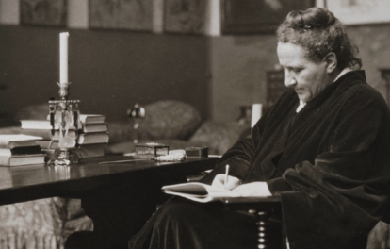
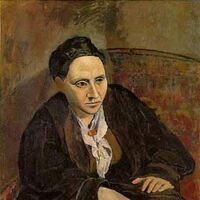
Gertrude Stein was born in Allegheny, Pennsylvania, on February 3, 1874, to wealthy German-Jewish immigrants. At the age of three, her family moved first to Vienna and then to Paris. They returned to America in 1878 and settled in Oakland, California. Her mother, Amelia, died of cancer in 1888 and her father, Daniel, died 1891. Stein attended Radcliffe College from 1893 to 1897, where she specialized in Psychology under noted psychologist William James. After leaving Radcliffe, she enrolled at the Johns Hopkins University, where she studied medicine for four years, leaving in 1901. Stein did not receive a formal degree from either institution. In 1903, Stein moved to Paris with Alice B. Toklas, a younger friend from San Francisco who would remain her partner and secretary throughout her life. The couple did not return to the United States for over thirty years. Together with Toklas and her brother Leo, an art critic and painter, Stein took an apartment on the Left Bank. Their home, 27 rue de Fleurus, soon became gathering spot for many young artists and writers including Henri Matisse, Ezra Pound, Pablo Picasso, Max Jacob, and Guillaume Apollinaire. She was a passionate advocate for the "new" in art, her literary friendships grew to include writers as diverse as William Carlos Williams, Djuana Barnes, F. Scott Fitzgerald, James Joyce, and Ernest Hemingway. It was to Hemingway that Stein coined the phrase "the lost generation" to describe the expatriate writers living abroad between the wars. By 1913, Stein's support of cubist painters and her increasingly avant-garde writing caused a split with her brother Leo, who moved to Florence. Her first book, Three Lives, was published in 1909. She followed it with Tender Buttons in 1914. Tender Buttons clearly showed the profound effect modern painting had on her writing. In these small prose poems, images and phrases come together in often surprising ways—similar in manner to cubist painting. Her writing, characterized by its use of words for their associations and sounds rather than their meanings, received considerable interest from other artists and writers, but did not find a wide audience. Sherwood Anderson in the introduction to Geography and Plays (1922) wrote that her writing "consists in a rebuilding, and entire new recasting of life, in the city of words." Among Stein's most influential works are The Making of Americans (1925); How to Write (1931); The Autobiography of Alice B. Toklas (1933), which was a best-seller; and Stanzas in Meditation and Other Poems [1929-1933] (1956). In 1934, the biographer T. S. Matthews described her as a "solid elderly woman, dressed in no-nonsense rough-spun clothes," with "deep black eyes that make her grave face and its archaic smile come alive." Stein died at the American Hospital at Neuilly on July 27, 1946, of inoperable cancer.
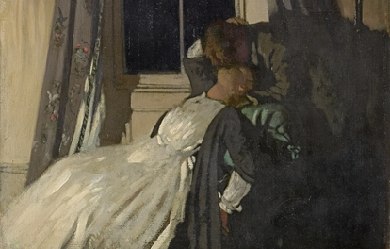
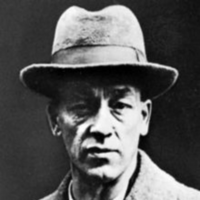
James Stephens (9 February 1880– 26 December 1950) was an Irish novelist and poet. He produced many retellings of Irish myths and fairy tales. His retellings are marked by a rare combination of humour and lyricism (Deirdre, and Irish Fairy Tales are often especially praised). He also wrote several original novels (The Crock of Gold, Etched in Moonlight, Demi-Gods) based loosely on Irish fairy tales. The Crock of Gold in particular has achieved enduring popularity and has often been reprinted.
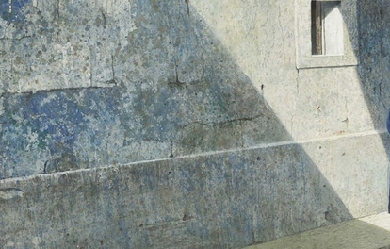
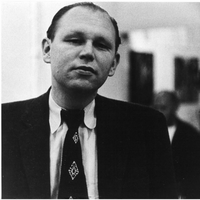
Jack Spicer (January 30, 1925– August 17, 1965) was an American poet often identified with the San Francisco Renaissance. In 2009, My Vocabulary Did This to Me: The Collected Poetry of Jack Spicer won the American Book Award for poetry. Life and work Spicer was born in Los Angeles, where he later graduated from Fairfax High School in 1942, and attended the University of Redlands from 1943-45. He spent most of his writing-life in San Francisco and spent the years 1945 to 1950 and 1952 to 1955 at the University of California, Berkeley, where he began writing, doing work as a research-linguist, and publishing some poetry (though he disdained publishing). During this time he searched out fellow poets, but it was through his alliance with Robert Duncan and Robin Blaser that Spicer forged a new kind of poetry, and together they referred to their common work as the Berkeley Renaissance. The three, who were all gay, also educated younger poets in their circle about their “queer genealogy”, Rimbaud, Lorca, and other gay writers. Spicer’s poetry of this period is collected in One Night Stand and Other Poems (1980). His Imaginary Elegies, later collected in Donald Allen’s The New American Poetry 1945-1960 anthology, were written around this time. In 1954, he co-founded the Six Gallery in San Francisco, which soon became famous as the scene of the October 1955 Six Gallery reading that launched the West Coast Beat movement. In 1955, Spicer moved to New York and then to Boston, where he worked for a time in the Rare Book Room of Boston Public Library. Blaser was also in Boston at this time, and the pair made contact with a number of local poets, including John Wieners, Stephen Jonas, and Joe Dunn. Spicer returned to San Francisco in 1956 and started working on After Lorca. This book represented a major change in direction for two reasons. Firstly, he came to the conclusion that stand-alone poems (which Spicer referred to as his one-night stands) were unsatisfactory and that henceforth he would compose serial poems. In fact, he wrote to Blaser that 'all my stuff from the past (except the Elegies and Troilus) looks foul to me.' Secondly, in writing After Lorca, he began to practice what he called “poetry as dictation”. His interest in the work of Federico García Lorca, especially as it involved the cante jondo ideal, also brought him near the poetics of the deep image group. The Troilus referred to was Spicer’s then unpublished play of that name. The play finally appeared in print in 2004, edited by Aaron Kunin, in issue 3 of No - A Journal of the Arts. In 1957, Spicer ran a workshop called Poetry as Magic at San Francisco State College, which was attended by Duncan, Helen Adam, James Broughton, Joe Dunn, Jack Gilbert, and George Stanley. He also participated in, and sometimes hosted, Blabbermouth Night at a literary bar called The Place. This was a kind of contest of improvised poetry and encouraged Spicer’s view of poetry as being dictated to the poet. After many years of alcohol abuse, Spicer fell into a prehepatic coma in his apartment building elevator, and later died aged 40 in the poverty ward of San Francisco General Hospital on August 17, 1965. Legacy Spicer’s view of the role of language in the process of writing poetry was probably the result of his knowledge of modern pre-Chomskyan linguistics and his experience as a research-linguist at Berkeley. In the legendary Vancouver lectures he elucidated his ideas on “transmissions” (dictations) from the Outside, using the comparison of the poet as crystal-set or radio receiving transmissions from outer space, or Martian transmissions. Although seemingly far-fetched, his view of language as “furniture”, through which the transmissions negotiate their way, is grounded in the structuralist linguistics of Zellig Harris and Charles Hockett. (In fact, the poems of his final book, Language, refer to linguistic concepts such as morphemes and graphemes). As such, Spicer is acknowledged as a precursor and early inspiration for the Language poets. However, many working poets today list Spicer in their succession of precedent figures. Spicer died as a result of his alcoholism. Since the posthumous publication of The Collected Books of Jack Spicer (first published in 1975), his popularity and influence has steadily risen, affecting poetry throughout the United States, Canada, and Europe. In 1994, The Tower of Babel: Jack Spicer’s Detective Novel was published. Adding to the Jack Spicer revival was the publication in 1998 of two volumes: The House That Jack Built: The Collected Lectures of Jack Spicer, edited by Peter Gizzi; and a biography: Jack Spicer and the San Francisco Renaissance by Lewis Ellingham and Kevin Killian (Hanover, NH: Wesleyan University Press, 1998). A collected works entitled My Vocabulary Did This to Me: The Collected Poetry of Jack Spicer (Peter Gizzi and Kevin Killian, editors) was published by Wesleyan University Press in November 2008, and won the American Book Award in 2009. A collection of critical essays entitled After Spicer: Critical Essays (John Emil Vincent, editor) was published by Wesleyan University Press in 2011. Further reading Blaser, Robin, editor. The Collected Books of Jack Spicer. Santa Rosa, Calif.: Black Sparrow Press, 1975 A Book Of Correspondences For Jack Spicer. Edited By David Levi Strauss and Benjamin Hollander. San Francisco: A Journal of Acts (#6), 1987; (Note: this is a collection of essays, poetry, and documents celebrating Spicer) Diaman, N. A.. Following My Heart: A Memoir. San Francisco: Persona Press, May 2007 _____. The City: A Novel. San Francisco: Persona Press, August 2007 _____. Sitting With Jack At The Poets Table. Los Angeles: The Advocate, 1984 _____. Second Crossing: A Novel. San Francisco: Persona Press, 1982 Ellingham, Lewis, and Kevin Killian. Poet, Be Like God: Jack Spicer and the San Francisco Renaissance. Middletown, Conn.: Wesleyan University Press, 1998 Foster, Edward Halsey. Jack Spicer. Boise, Idaho: Boise State University, 1991 Gizzi, Peter, editor. The House that Jack Built: The Collected Lectures of Jack Spicer. Hanover, NH: Wesleyan University Press, 1998 Spicer, Jack. Jack Spicer’s Beowulf, Part 1, edited by David Hadbawnik & Sean Reynolds, introduction by David Hadbawnik, Lost and Found: The CUNY Poetics Documents Initiative, New York, 2011 _____. Jack Spicer’s Beowulf, Part II, edited by David Hadbawnik & Sean Reynolds, afterword by Sean Reynolds, Lost and Found: The CUNY Poetics Documents Initiative, New York, 2011 Tallman, Warren. In the Midst. Vancouver: Talonbooks, 1992 Herndon, James. Everything as Expected San Francisco, 1973 Vincent, John Emil, editor. After Spicer: Critical Essays. Middletown, Conn.: Wesleyan University Press, 2011 References Wikipedia—https://en.wikipedia.org/wiki/Jack_Spicer
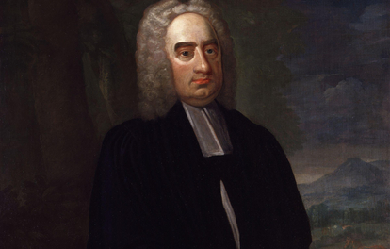
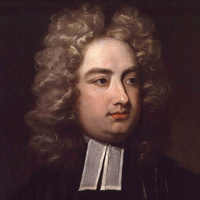
Jonathan Swift (30 November 1667– 19 October 1745) was an Anglo-Irish satirist, essayist, political pamphleteer (first for the Whigs, then for the Tories), poet and cleric who became Dean of St Patrick’s Cathedral, Dublin. Swift is remembered for works such as Gulliver’s Travels, A Modest Proposal, A Journal to Stella, Drapier’s Letters, The Battle of the Books, An Argument Against Abolishing Christianity and A Tale of a Tub. He is regarded by the Encyclopædia Britannica as the foremost prose satirist in the English language, and is less well known for his poetry.
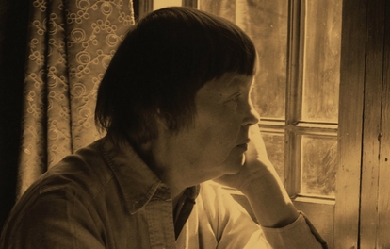
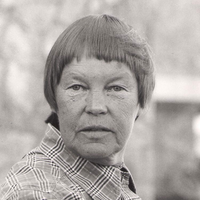
Anna Thilda May “May” Swenson (28 May 1913– 4 December 1989) was an American poet and playwright. She is considered one of the most important and original poets of the 20th century, as often hailed by the noted critic Harold Bloom. The first child of Margaret and Dan Arthur Swenson, she grew up as the eldest of ten children in a Mormon household where Swedish was spoken regularly and English was a second language. As a lesbian, she was somewhat shunned by her family for religious reasons. Much of her later poetry works were devoted to children. She also translated the work of contemporary Swedish poets, including the selected poems of Nobel laureate Tomas Tranströmer.
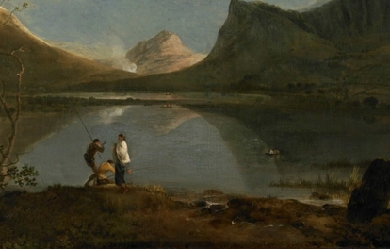
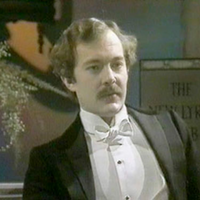
Arthur William Symons (28 February 1865– 22 January 1945), was a British poet, critic and magazine editor. Life Born in Milford Haven, Wales, of Cornish parents, Symons was educated privately, spending much of his time in France and Italy. In 1884–1886 he edited four of Bernard Quaritch’s Shakespeare Quarto Facsimiles, and in 1888–1889 seven plays of the “Henry Irving” Shakespeare. He became a member of the staff of the Athenaeum in 1891, and of the Saturday Review in 1894, but his major editorial feat was his work with the short-lived Savoy. His first volume of verse, Days and Nights (1889), consisted of dramatic monologues. His later verse is influenced by a close study of modern French writers, of Charles Baudelaire, and especially of Paul Verlaine. He reflects French tendencies both in the subject-matter and style of his poems, in their eroticism and their vividness of description. Symons contributed poems and essays to The Yellow Book, including an important piece which was later expanded into The Symbolist Movement in Literature, which would have a major influence on William Butler Yeats and T. S. Eliot. From late 1895 through 1896 he edited, along with Aubrey Beardsley and Leonard Smithers, The Savoy, a literary magazine which published both art and literature. Noteworthy contributors included Yeats, George Bernard Shaw, and Joseph Conrad. Symons was also a member of the Rhymer’s Club founded by Yeats in 1890. In 1892, The Minister’s Call, Symons’s first play, was produced by the Independent Theatre Society– a private club– to avoid censorship by the Lord Chamberlain’s Office. In 1902 Symons made a selection from his earlier verse, published as Poems. He translated from the Italian of Gabriele D’Annunzio The Dead City (1900) and The Child of Pleasure (1898), and from the French of Émile Verhaeren The Dawn (1898). To The Poems of Ernest Dowson (1905) he prefixed an essay on the deceased poet, who was a kind of English Verlaine and had many attractions for Symons. In 1909 Symons suffered a psychotic breakdown, and published very little new work for a period of more than twenty years. His Confessions: A Study in Pathology (1930) has a moving description of his breakdown and treatment. Verse Days and Nights (1889) Silhouettes (1892) London Nights (1895) Amoris victima (1897) Images of Good and Evil (1899) Poems in 2 volumes.(Contains: The Loom of Dreams in the second Volume, 1901), (1902) Lyrics (1903) An anthology of poetry published in the USA only. A Book of Twenty Songs (1905) The Fool of the World and other Poems (1906) Knave of Hearts (1913). Poems written between 1894 and 1908. Love’s Cruelty (1923) Jezebel Mort, and other poems (1931) Essays An Introduction to the study of Browning (1886) Studies in Two Literatures (1897) Aubrey Beardsley: An Essay with a Preface (1898) The Symbolist Movement in Literature (1899; 1919) Cities (1903), word-pictures of Rome, Venice, Naples, Seville, etc. Plays, Acting and Music (1903) Studies in Prose and Verse (1904) Studies in Seven Arts (1906). Figures of Several Centuries (1916) Cities and Sea-Coasts and Islands (1918) Studies in the Elizabethan Drama (1919) Charles Baudelaire: A Study (1920) Dramatis Personae (1925 - US edition 1923) From Toulouse-Lautrec to Rodin (1929) Studies in Strange Souls (1929) Confessions: A Study in Pathology (1930). A book containing Symons’s description of his breakdown and treatment. Wanderings (1931) A Study of Walter Pater (1932) Fiction Spiritual Adventures (1905). With an autobiographical sketch. References Wikipedia—https://en.wikipedia.org/wiki/Arthur_Symons
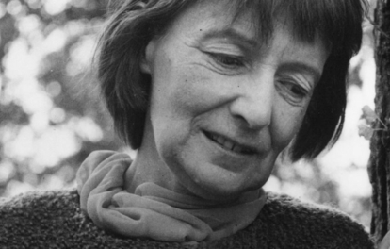
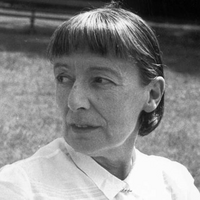
Florence Margaret Smith, known as Stevie Smith (20 September 1902– 7 March 1971) was an English poet and novelist. Life Stevie Smith, born Florence Margaret Smith in Kingston upon Hull, was the second daughter of Ethel and Charles Smith. She was called “Peggy” within her family, but acquired the name “Stevie” as a young woman when she was riding in the park with a friend who said that she reminded him of the jockey Steve Donoghue. Her father was a shipping agent, a business that he had inherited from his father. As the company and his marriage began to fall apart, he ran away to sea and Smith saw very little of her father after that. He appeared occasionally on 24-hour shore leave and sent very brief postcards ("Off to Valparaiso, Love Daddy"). When she was three years old she moved with her mother and sister to Palmers Green in North London where Smith would live until her death in 1971. She resented the fact that her father had abandoned his family. Later, when her mother became ill, her aunt Madge Spear (whom Smith called “The Lion Aunt”) came to live with them, raised Smith and her elder sister Molly and became the most important person in Smith’s life. Spear was a feminist who claimed to have “no patience” with men and, as Smith wrote, “she also had 'no patience’ with Hitler”. Smith and Molly were raised without men and thus became attached to their own independence, in contrast to what Smith described as the typical Victorian family atmosphere of “father knows best”. When Smith was five she developed tubercular peritonitis and was sent to a sanatorium near Broadstairs, Kent, where she remained for three years. She related that her preoccupation with death began when she was seven, at a time when she was very distressed at being sent away from her mother. Death and fear fascinated her and provide the subjects of many of her poems. Her mother died when Smith was 16. When suffering from the depression to which she was subject all her life she was so consoled by the thought of death as a release that, as she put it, she did not have to commit suicide. She wrote in several poems that death was “the only god who must come when he is called”. Smith suffered throughout her life from an acute nervousness, described as a mix of shyness and intense sensitivity. In the Poem “A House of Mercy”, she wrote of her childhood house in North London: It was a house of female habitation, Two ladies fair inhabited the house, And they were brave. For although Fear knocked loud Upon the door, and said he must come in, They did not let him in. Smith was educated at Palmers Green High School and North London Collegiate School for Girls. She spent the remainder of her life with her aunt, and worked as private secretary to Sir Neville Pearson with Sir George Newnes at Newnes Publishing Company in London from 1923 to 1953. Despite her secluded life, she corresponded and socialised widely with other writers and creative artists, including Elisabeth Lutyens, Sally Chilver, Inez Holden, Naomi Mitchison, Isobel English and Anna Kallin. After she retired from Sir Neville Pearson’s service following a nervous breakdown she gave poetry readings and broadcasts on the BBC that gained her new friends and readers among a younger generation. Sylvia Plath became a fan of her poetry and sent Smith a letter in 1962, describing herself as “a desperate Smith-addict.” Plath expressed interest in meeting in person but committed suicide soon after sending the letter. Smith was described by her friends as being naive and selfish in some ways and formidably intelligent in others, having been raised by her aunt as both a spoiled child and a resolutely autonomous woman. Likewise, her political views vacillated between her aunt’s Toryism and her friends’ left-wing tendencies. Smith was celibate for most of her life, although she rejected the idea that she was lonely as a result, alleging that she had a number of intimate relationships with friends and family that kept her fulfilled. She never entirely abandoned or accepted the Anglican faith of her childhood, describing herself as a “lapsed atheist”, and wrote sensitively about theological puzzles;"There is a God in whom I do not believe/Yet to this God my love stretches." Her 14-page essay of 1958, “The Necessity of Not Believing”, concludes: “There is no reason to be sad, as some people are sad when they feel religion slipping off from them. There is no reason to be sad, it is a good thing.” Smith died of a brain tumour on 7 March 1971. Her last collection, Scorpion and other Poems was published posthumously in 1972, and the Collected Poems followed in 1975. Three novels were republished and there was a successful play based on her life, Stevie, written by Hugh Whitemore. It was filmed in 1978 by Robert Enders and starred Glenda Jackson and Mona Washbourne. Fiction Smith wrote three novels, the first of which, Novel on Yellow Paper, was published in 1936. Apart from death, common subjects in her writing include loneliness; myth and legend; absurd vignettes, usually drawn from middle-class British life, war, human cruelty and religion. All her novels are lightly fictionalised accounts of her own life, which got her into trouble at times as people recognised themselves. Smith said that two of the male characters in her last book are different aspects of George Orwell, who was close to Smith. There were rumours that they were lovers; he was married to his first wife at the time. Novel on Yellow Paper (Cape, 1936) Smith’s first novel is structured as the random typings of a bored secretary, Pompey. She plays word games, retells stories from classical and popular culture, remembers events from her childhood, gossips about her friends and describes her family, particularly her beloved Aunt. As with all Smith’s novels, there is an early scene where the heroine expresses feelings and beliefs which she will later feel significant, although ambiguous, regret for. In Novel on Yellow Paper that belief is anti-Semitism, where she feels elation at being the “only Goy” at a Jewish party. This apparently throwaway scene acts as a timebomb, which detonates at the centre of the novel when Pompey visits Germany as the Nazis are gaining power. With horror, she acknowledges the continuity between her feeling “Hurray for being a Goy” at the party and the madness that is overtaking Germany. The German scenes stand out in the novel, but perhaps equally powerful is her dissection of failed love. She describes two unsuccessful relationships, first with the German Karl and then with the suburban Freddy. The final section of the novel describes with unusual clarity the intense pain of her break-up with Freddy. Over the Frontier (Cape, 1938) Smith herself dismissed her second novel as a failed experiment, but its attempt to parody popular genre fiction to explore profound political issues now seems to anticipate post-modern fiction. If anti-Semitism was one of the key themes of Novel on Yellow Paper, Over the Frontier is concerned with militarism. In particular, she asks how the necessity of fighting Fascism can be achieved without descending into the nationalism and dehumanisation that fascism represents. After a failed romance the heroine, Pompey, suffers a breakdown and is sent to Germany to recuperate. At this point the novel changes style radically, as Pompey becomes part of an adventure/spy yarn in the style of John Buchan or Dornford Yates. As the novel becomes increasingly dreamlike, Pompey crosses over the frontier to become a spy and soldier. If her initial motives are idealistic, she becomes seduced by the intrigue and, ultimately, violence. The vision Smith offers is a bleak one: “Power and cruelty are the strengths of our lives, and only in their weakness is there love.” The Holiday (Chapman and Hall, 1949) Smith’s final novel is her own favourite, and most fully realised. It is concerned with personal and political malaise in the immediate post-war period. Most of the characters are either employed in the army or civil service in post-war reconstruction, and its heroine, Celia, works for the Ministry as a cryptographer and propagandist. The Holiday describes a series of hopeless relationships. Celia and her cousin Caz are in love, but cannot pursue their affair since it is believed that, because of their parents’ adultery, they are half-brother and sister. Celia’s other cousin Tom is in love with her, Basil is love with Tom, Tom is estranged from his father, Celia’s beloved Uncle Heber, who pines for a reconciliation; and Celia’s best friend Tiny longs for the married Vera. These unhappy, futureless but intractable relationships are mirrored by the novel’s political concerns. The unsustainability of the British Empire and the uncertainty over Britain’s post-war role are constant themes, and many of the characters discuss their personal and political concerns as if they were seamlessly linked. Caz is on leave from Palestine and is deeply disillusioned, Tom goes mad during the war, and it is telling that the family scandal that blights Celia and Caz’s lives took place in India. Just as Pompey’s anti-semitism was tested in Novel on Yellow Paper, so Celia’s traditional nationalism and sentimental support for colonialism is challenged throughout The Holiday. Poetry Smith’s first volume of poetry, the self-illustrated A Good Time Was Had By All, was published in 1937 and established her as a poet. Soon her poems were found in periodicals. Her style was often very dark; her characters were perpetually saying “goodbye” to their friends or welcoming death. At the same time her work has an eerie levity and can be very funny though it is neither light nor whimsical. “Stevie Smith often uses the word 'peculiar’ and it is the best word to describe her effects” (Hermione Lee). She was never sentimental, undercutting any pathetic effects with the ruthless honesty of her humour. “A good time was had by all” itself became a catch phrase, still occasionally used to this day. Smith said she got the phrase from parish magazines, where descriptions of church picnics often included this phrase. This saying has become so familiar that it is recognised even by those who are unaware of its origin. Variations appear in pop culture, including “Being for the Benefit of Mr. Kite!” by the Beatles. Though her poems were remarkably consistent in tone and quality throughout her life, their subject matter changed over time, with less of the outrageous wit of her youth and more reflection on suffering, faith and the end of life. Her best-known poem is “Not Waving but Drowning”. She was awarded the Cholmondeley Award for Poets in 1966 and won the Queen’s Gold Medal for poetry in 1969. She published nine volumes of poems in her lifetime (three more were released posthumously).
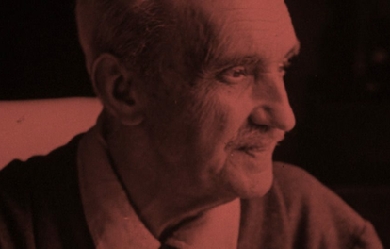
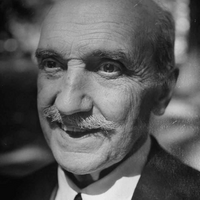
Jorge Agustín Nicolás Ruiz de Santayana y Borrás, k (nown in English as George Santayana (/ˌsæntiˈænə/ or /-ˈɑːnə/; December 16, 1863– September 26, 1952), was a philosopher, essayist, poet, and novelist. Originally from Spain, Santayana was raised and educated in the United States from the age of eight and identified himself as an American, although he always kept a valid Spanish passport. He wrote in English and is generally considered an American man of letters. At the age of forty-eight, Santayana left his position at Harvard and returned to Europe permanently, never to return to the United States. His last wish was to be buried in the Spanish pantheon in Rome. Santayana is popularly known for aphorisms, such as “Those who cannot remember the past are condemned to repeat it,” “Only the dead have seen the end of war,”, and the definition of beauty as “pleasure objectified”. Although an atheist, he always treasured the Spanish Catholic values, practices and world-view with which he was brought up. Santayana was a broad-ranging cultural critic spanning many disciplines. Early life Born Jorge Agustín Nicolás Ruiz de Santayana y Borrás on December 16, 1863, in Madrid, he spent his early childhood in Ávila, Spain. His mother, Josefina Borrás, was the daughter of a Spanish official in the Philippines, and Jorge was the only child of her second marriage. She was the widow of George Sturgis, a Boston merchant with whom she had five children, two of whom died in infancy. She lived in Boston for a few years following her husband’s death in 1857, but in 1861 moved with her three surviving children to live in Madrid. There she encountered Agustín Ruiz de Santayana, an old friend from her years in the Philippines. They married in 1862. A colonial civil servant, Ruiz de Santayana was also a painter and minor intellectual. The family lived in Madrid and Ávila until 1869, when Josefina Borrás de Santayana returned to Boston with her three Sturgis children, as she had promised her first husband to raise the children in the United States. She left the six-year-old Jorge with his father in Spain. Jorge and his father followed her in 1872, but his father, finding neither Boston nor his wife’s attitude to his liking, soon returned alone to Ávila. He remained there the rest of his life. Jorge did not see him again until he entered Harvard College and took his summer vacations in Spain. Sometime during this period, Jorge’s first name was anglicized as George, the English equivalent. Education Santayana attended Boston Latin School and Harvard College, where he studied under the philosophers William James and Josiah Royce and was involved in eleven clubs as an alternative to athletics. He was founder and president of the Philosophical Club, a member of the literary society known as the O.K., an editor and cartoonist for The Harvard Lampoon, and co-founder of the literary journal The Harvard Monthly. In December, 1885, he played the role of Lady Elfrida in the Hasty Pudding theatrical Robin Hood, followed by the production Papillonetta in the spring of his senior year. After graduating Phi Beta Kappa from Harvard in 1886, Santayana studied for two years in Berlin. He then returned to Harvard to write his dissertation on Hermann Lotze and teach philosophy, becoming part of the Golden Age of the Harvard philosophy department. Some of his Harvard students became famous in their own right, including T. S. Eliot, Robert Frost, Gertrude Stein, Horace Kallen, Walter Lippmann, and W. E. B. Du Bois. Wallace Stevens was not among his students but became a friend. From 1896 to 1897, Santayana studied at King’s College, Cambridge. Later life In 1912, Santayana resigned his position at Harvard to spend the rest of his life in Europe. He had saved money and been aided by a legacy from his mother. After some years in Ávila, Paris and Oxford, after 1920, he began to winter in Rome, eventually living there year-round until his death. During his forty years in Europe, he wrote nineteen books and declined several prestigious academic positions. Many of his visitors and correspondents were Americans, including his assistant and eventual literary executor, Daniel Cory. In later life, Santayana was financially comfortable, in part because his 1935 novel, The Last Puritan, had become an unexpected best-seller. In turn, he financially assisted a number of writers, including Bertrand Russell, with whom he was in fundamental disagreement, philosophically and politically. Santayana never married. His romantic life, if any, is not well understood. Some evidence, including a comment Santayana made late in life comparing himself to A. E. Housman, and his friendships with people who were openly homosexual and bisexual, has led scholars to speculate that Santayana was perhaps homosexual or bisexual himself, but it remains unclear whether he had any actual heterosexual or homosexual relationships. Philosophical work and publications Santayana’s main philosophical work consists of The Sense of Beauty (1896), his first book-length monograph and perhaps the first major work on aesthetics written in the United States; The Life of Reason five volumes, 1905–6, the high point of his Harvard career; Scepticism and Animal Faith (1923); and The Realms of Being (4 vols., 1927–40). Although Santayana was not a pragmatist in the mold of William James, Charles Sanders Peirce, Josiah Royce, or John Dewey, The Life of Reason arguably is the first extended treatment of pragmatism written. Like many of the classical pragmatists, and because he was well-versed in evolutionary theory, Santayana was committed to metaphysical naturalism. He believed that human cognition, cultural practices, and social institutions have evolved so as to harmonize with the conditions present in their environment. Their value may then be adjudged by the extent to which they facilitate human happiness. The alternate title to The Life of Reason, “the Phases of Human Progress,” is indicative of this metaphysical stance. Santayana was an early adherent of epiphenomenalism, but also admired the classical materialism of Democritus and Lucretius (of the three authors on whom he wrote in Three Philosophical Poets, Santayana speaks most favorably of Lucretius). He held Spinoza’s writings in high regard, calling him his “master and model.” Although an atheist, he held a fairly benign view of religion, in contrast to Bertrand Russell who held that religion was harmful. Santayana’s views on religion are outlined in his books Reason in Religion, The Idea of Christ in the Gospels, and Interpretations of Poetry and Religion. Santayana described himself as an “aesthetic Catholic.” He spent the last decade of his life at the Convent of the Blue Nuns of the Little Company of Mary on the Celian Hill at 6 Via Santo Stefano Rotondo in Rome, where he was cared for by the Irish sisters. Man of letters Santayana’s one novel, The Last Puritan, is a bildungsroman, centering on the personal growth of its protagonist, Oliver Alden. His Persons and Places is an autobiography. These works also contain many of his sharper opinions and bons mots. He wrote books and essays on a wide range of subjects, including philosophy of a less technical sort, literary criticism, the history of ideas, politics, human nature, morals, the influence of religion on culture and social psychology, all with considerable wit and humor. While his writings on technical philosophy can be difficult, his other writings are far more accessible and pithy. He wrote poems and a few plays, and left an ample correspondence, much of it published only since 2000. Like Alexis de Tocqueville, Santayana observed American culture and character from a foreigner’s point of view. Like William James, his friend and mentor, he wrote philosophy in a literary way. Ezra Pound includes Santayana among his many cultural references in The Cantos, notably in “Canto LXXXI” and “Canto XCV”. Santayana is usually considered an American writer, although he declined to become an American citizen, resided in fascist Italy for decades, and said that he was most comfortable, intellectually and aesthetically, at Oxford University. Awards * Royal Society of Literature Benson Medal, 1925. * Columbia University Butler Gold Medal, 1945. * Honorary degree from the University of Wisconsin, 1911. Legacy * Santayana is remembered in large part for his aphorisms, many of which have been so frequently used as to have become clichéd. His philosophy has not fared quite as well. He is regarded by most as an excellent prose stylist, and Professor John Lachs (who is sympathetic with much of Santayana’s philosophy) writes, in On Santayana, that his eloquence may ironically be the very cause of this neglect. * Santayana influenced those around him, including Bertrand Russell, who Santayana single-handedly steered away from the ethics of G. E. Moore. He also influenced many prominent people such as Harvard students T. S. Eliot, Robert Frost, Gertrude Stein, Horace Kallen, Walter Lippmann, W. E. B. Du Bois, Conrad Aiken, Van Wyck Brooks, and Supreme Court Justice Felix Frankfurter, as well as Max Eastman and the poet Wallace Stevens. Stevens was especially influenced by Santayana’s aesthetics and became a friend even though Stevens did not take courses taught by Santayana. * Santayana is quoted by the Canadian-American sociologist Erving Goffman as a central influence in the thesis of his famous book The Presentation of Self in Everyday Life (1959). Religious historian Jerome A. Stone credits Santayana with contributing to the early thinking in the development of religious naturalism. English mathematician and philosopher Alfred North Whitehead quotes Santayana extensively in his magnum opus Process and Reality. * Chuck Jones used Santayana’s description of fanaticism as “redoubling your effort after you’ve forgotten your aim” to describe his cartoons starring Wile E. Coyote and Road Runner. Bibliography * * 1894. Sonnets And Other Verses. * 1896. The Sense of Beauty: Being the Outline of Aesthetic Theory. * 1899. Lucifer: A Theological Tragedy. * 1900. Interpretations of Poetry and Religion. * 1901. A Hermit of Carmel And Other Poems. * 1905–1906. The Life of Reason: or the Phases of Human Progress, 5 vols. * 1910. Three Philosophical Poets: Lucretius, Dante, and Goethe. * 1913. Winds of Doctrine: Studies in Contemporary Opinion. * 1915. Egotism in German Philosophy. * 1920. Character and Opinion in the United States: With Reminiscences of William James and Josiah Royce and Academic Life in America. * 1920. Little Essays, Drawn From the Writings of George Santayana. by Logan Pearsall Smith, With the Collaboration of the Author. * 1922. Soliloquies in England and Later Soliloquies. * 1922. Poems. * 1923. Scepticism and Animal Faith: Introduction to a System of Philosophy. * 1926. Dialogues in Limbo * 1927. Platonism and the Spiritual Life. * 1927–40. The Realms of Being, 4 vols. * 1931. The Genteel Tradition at Bay. * 1933. Some Turns of Thought in Modern Philosophy: Five Essays * 1935. The Last Puritan: A Memoir in the Form of a Novel. * 1936. Obiter Scripta: Lectures, Essays and Reviews. Justus Buchler and Benjamin Schwartz, eds. * 1944. Persons and Places. * 1945. The Middle Span. * 1946. The Idea of Christ in the Gospels; or, God in Man: A Critical Essay. * 1948. Dialogues in Limbo, With Three New Dialogues. * 1951. Dominations and Powers: Reflections on Liberty, Society, and Government. * 1953. My Host The World * Posthumous edited/selected works * 1955. The Letters of George Santayana. Daniel Cory, ed. Charles Scribner’s Sons. New York. (296 letters) * 1956. Essays in Literary Criticism of George Santayana. Irving Singer, ed. * 1957. The Idler and His Works, and Other Essays. Daniel Cory, ed. * 1967. The Genteel Tradition: Nine Essays by George Santayana. Douglas L. Wilson, ed. * 1967. George Santayana’s America: Essays on Literature and Culture. James Ballowe, ed. * 1967. Animal Faith and Spiritual Life: Previously Unpublished and Uncollected Writings by George Santayana With Critical Essays on His Thought. John Lachs, ed. * 1968. Santayana on America: Essays, Notes, and Letters on American Life, Literature, and Philosophy. Richard Colton Lyon, ed. * 1968. Selected Critical Writings of George Santayana, 2 vols. Norman Henfrey, ed. * 1969. Physical Order and Moral Liberty: Previously Unpublished Essays of George Santayana. John and Shirley Lachs, eds. * 1979. The Complete Poems of George Santayana: A Critical Edition. Edited, with an introduction, by W. G. Holzberger. Bucknell University Press. * 1995. The Birth of Reason and Other Essays. Daniel Cory, ed., with an Introduction by Herman J. Saatkamp, Jr. Columbia Univ. Press. * 2009. The Essential Santayana. Selected Writings Edited by the Santayana Edition, Compiled and with an introduction by Martin A. Coleman. Bloomington: Indiana University Press. * The Works of George Santayana * Unmodernized, critical editions of George Santayana’s published and unpublished writing. The Works is edited by the Santayana Edition and published by The MIT Press. * 1986. Persons and Places. Santayana’s autobiography, incorporating Persons and Places, 1944; The Middle Span, 1945; and My Host the World, 1953. * 1988 (1896). The Sense of Beauty: Being the Outline of Aesthetic Theory. * 1990 (1900). Interpretations of Poetry and Religion. * 1994 (1935). The Last Puritan: A Memoir in the Form of a Novel. * The Letters of George Santayana. Containing over 3,000 of his letters, many discovered posthumously, to more than 350 recipients. * 2001. Book One, 1868–1909. * 2001. Book Two, 1910–1920. * 2002. Book Three, 1921–1927. * 2003. Book Four, 1928–1932. * 2003. Book Five, 1933–1936. * 2004. Book Six, 1937–1940. * 2006. Book Seven, 1941–1947. * 2008. Book Eight, 1948–1952. * 2011. George Santayana’s Marginalia: A Critical Selection, Books 1 and 2. Compiled by John O. McCormick and edited by Kristine W. Frost. * The Life of Reason in five books. * 2011 (1905). Reason in Common Sense. * 2013 (1905). Reason in Society. * 2014 (1905). Reason in Religion. References Wikipedia—https://en.wikipedia.org/wiki/George_Santayana
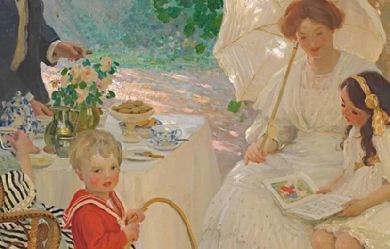
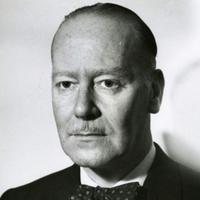
Kenneth Adolf Slessor OBE (27 March 1901– 30 June 1971) was an Australian poet, journalist and official War Correspondent in World War II. He was one of Australia’s leading poets, notable particularly for the absorption of modernist influences into Australian poetry. The Kenneth Slessor Prize for Poetry is named after him. Early life Slessor was born Kenneth Adolphe Schloesser in Orange, New South Wales. As a boy, he lived in England for a time with his parents and in Australia visited the mines of rural New South Wales with his father, a Jewish mining engineer whose father and grandfather had been distinguished musicians in Germany. His family moved to Sydney in 1903. Slessor attended Mowbray House School (1910–1914) and the Sydney Church of England Grammar School (1915–1918), where he began to write poetry. His first published poem was in 1917 about a digger in Europe, remembering Sydney and its icons. Slessor passed the 1918 NSW Leaving Certificate with first-class honours in English and joined the Sydney Sun as a journalist. In 1919, seven of his poems were published. He married for the first time in 1922. Career Slessor made his living as a newspaper journalist, mostly for the Sydney Sun, and was a war correspondent during World War II (1939–1945). Slessor counted Norman Lindsay, Hugh McCrae and Jack Lindsay among his friends. As the Australian Official War Correspondent during World War II, Slessor reported not only from Australia but from Greece, Syria, Libya, Egypt, and New Guinea. Slessor also wrote on rugby league football for the popular publication Smith’s Weekly. Poetry The bulk of Slessor’s poetic work was produced before the end of the Second World War. His poem “Five Bells”—relating to Sydney Harbour, time, the past, memory, and the death of the artist, friend and colleague of Slessor at Smith’s Weekly, Joe Lynch—remains probably his best known poem, followed by “Beach Burial”, a tribute to Australian troops who fought in World War II. In 1965, Australian writer Hal Porter wrote of having met and stayed with Slessor in the 1930s. He described Slessor as: ...a city lover, fastidious and excessively courteous, in those qualities resembles Baudelaire, as he does in being incapable of sentimentalizing over vegetation, in finding in nature something cruel, something bordering on effrontery. He prefers chiselled stone to the disorganization of grass. Awards In the New Year’s Honours of 1959, Slessor was appointed an Officer of the Order of the British Empire (OBE) for services to literature. Personal life At the age of 21, Slessor married 28-year-old Noëla Glasson in Ashfield, Sydney, on 18 August 1922. Noëla died of cancer on 22 October 1945. He married Pauline Wallace in 1951; and a year later celebrated the birth of his only child, Paul Slessor, before the marriage dissolved in 1961. Death He died alone and suddenly of a heart attack on 30 June 1971 at the Mater Misericordiae Hospital, North Sydney. Bibliography Poetry collections * Thief of the Moon, Sydney: Hand press of J. T. Kirtley (1924) * Earth-Visitors, London: Fanfrolico Press (1926) * Trio: a book of poems, with Harley Matthews and Colin Simpson, Sydney: Sunnybrook Press (1931) * Cuckooz Contrey, Sydney: Frank Johnson (1932) * Darlinghurst Nights: and Morning glories: being 47 strange sights, Sydney (1933) * Funny Farmyard: Nursery Rhymes and Painting Book, with drawings by Sydney Miller, Sydney: Frank Johnson (1933) * Five Bells: XX Poems, Sydney: F.C. Johnson (1939) * One Hundred Poems, 1919–1939, Sydney: Angus & Robertson (1944) * “Beach Burial” 1944 * “The Night Ride” * “Sleep” * “Out of Time” 1930 Essays/prose * Bread and Wine, Sydney, Angus & Robertson (1970) Edited * Australian Poetry (1945) * The Penguin Book of Modern Australian Verse (Melbourne, 1961) Recognition Slessor has a street in the Canberra suburb of McKellar named after him. The bells motif in “Five Bells” is referenced at the end of the 1999 song “You Gotta Love This City” by The Whitlams, which also involves a drowning death in Sydney Harbour. Slessor’s poetry was chosen to be placed on the Higher School Certificate English reading lists, and was also examined in the final English exam. References Wikipedia—https://en.wikipedia.org/wiki/Kenneth_Slessor
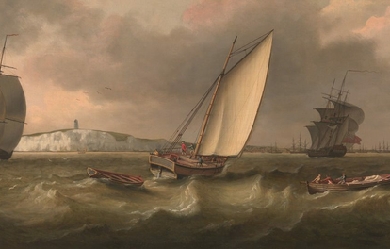
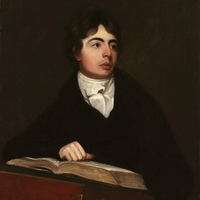
Robert Southey (/ˈsaʊði/ or /ˈsʌði/; August 12, 1774 in Bristol– March 21, 1843 in London) was an English poet of the Romantic school, one of the so-called “Lake Poets”, and Poet Laureate for 30 years from 1813 to his death in 1843. Although his fame has long been eclipsed by that of his contemporaries and friends William Wordsworth and Samuel Taylor Coleridge, Southey’s verse still enjoys some popularity. Southey was also a prolific letter writer, literary scholar, essay writer, historian and biographer. His biographies include the life and works of John Bunyan, John Wesley, William Cowper, Oliver Cromwell and Horatio Nelson. The last has rarely been out of print since its publication in 1813 and was adapted for the screen in the 1926 British film, Nelson. He was also a renowned scholar of Portuguese and Spanish literature and history, translating a number of works from those two languages into English and writing a History of Brazil (part of his planned History of Portugal, which he never completed) and a History of the Peninsular War. Perhaps his most enduring contribution to literary history is the children’s classic The Story of the Three Bears, the original Goldilocks story, first published in Southey’s prose collection The Doctor. He also wrote on political issues which led to a brief, non-sitting, spell as a Tory Member of Parliament. Life Robert Southey was born in Wine Street, Bristol, England, to Robert Southey and Margaret Hill. He was educated at Westminster School, London, (where he was expelled for writing an article in The Flagellant condemning flogging) and Balliol College, Oxford. Southey later said of Oxford, “All I learnt was a little swimming... and a little boating.” Experimenting with a writing partnership with Samuel Taylor Coleridge, most notably in their joint composition of The Fall of Robespierre, Southey published his first collection of poems in 1794. The same year, Southey, Coleridge, Robert Lovell and several others discussed creating an idealistic community ("pantisocracy") on the banks of the Susquehanna River in America: Southey was the first to reject the idea as unworkable, suggesting that they move the intended location to Wales, but when they failed to agree the plan was abandoned. In 1799 Southey and Coleridge were involved with early experiments with nitrous oxide (laughing gas), conducted by the Cornish scientist Humphry Davy. Southey married Edith Fricker at St. Mary Redcliffe, Bristol, on 14 November 1795. She was a sister of Sara Fricker, Coleridge’s wife. The Southeys made their home at Greta Hall, Keswick, in the Lake District, living on his tiny income. Also living at Greta Hall and supported by him were Sara Coleridge and her three children, after Coleridge abandoned them, as well as the widow of poet Robert Lovell and her son. In 1808 Southey met Walter Savage Landor, whose work he admired, and they became close friends. That same year he wrote Letters from England under the pseudonym Don Manuel Alvarez Espriella, an account of a tour supposedly from a foreigner’s viewpoint. It is considered to present the most accurate picture of English ways at the beginning of the 19th century. From 1809, Southey contributed to the Quarterly Review. He had become so well known by 1813 that he was appointed Poet Laureate after Walter Scott refused the post. In 1819, through a mutual friend (John Rickman), Southey met the leading civil engineer Thomas Telford and struck up a strong friendship. From mid-August to 1 October 1819, Southey accompanied Telford on an extensive tour of his engineering projects in the Scottish Highlands, keeping a diary of his observations. This was published in 1929 as Journal of a Tour in Scotland in 1819. He was also a friend of the Dutch poet Willem Bilderdijk, whom he met twice, in 1824 and 1826, at Bilderdijk’s home in Leiden. In 1837 Southey received a letter from Charlotte Brontë, seeking his advice on some of her poems. He wrote back praising her talents, but also discouraging her from writing professionally. He said “Literature cannot be the business of a woman’s life”. Years later, Brontë remarked to a friend that the letter was “kind and admirable; a little stringent, but it did me good.” In 1838, Edith died and Southey remarried, to Caroline Anne Bowles, also a poet, on 4 June 1839. Southey’s mind was giving way when he wrote a last letter to his friend Landor in 1839, but he continued to mention Landor’s name when generally incapable of mentioning any one. He died on 21 March 1843 and was buried in the churchyard of Crosthwaite Church, Keswick, where he had worshipped for forty years. There is a memorial to him inside the church, with an epitaph written by his friend, William Wordsworth. Many of his poems are still read by British schoolchildren, the best-known being The Inchcape Rock, God’s Judgement on a Wicked Bishop, After Blenheim (possibly one of the earliest anti-war poems) and Cataract of Lodore. As a prolific writer and commentator, Southey introduced or popularised a number of words into the English language. The term autobiography, for example, was used by Southey in 1809 in the Quarterly Review in which he predicted an “epidemical rage for autobiography”, which indeed has continued to the present day. Politics Although originally a radical supporter of the French Revolution, Southey followed the trajectory of his fellow Romantic poets Wordsworth and Coleridge towards conservatism. Embraced by the Tory establishment as Poet Laureate, and from 1807 in receipt of a yearly stipend from them, he vigorously supported the Liverpool government. He argued against parliamentary reform ("the railroad to ruin with the Devil for driver"), blamed the Peterloo Massacre on the allegedly revolutionary “rabble” killed and injured by government troops, and opposed Catholic emancipation. In 1817 he privately proposed penal transportation for those guilty of “libel” or “sedition”. He had in mind figures like Thomas Jonathan Wooler and William Hone, whose prosecution he urged. Such writers were guilty, he wrote in the Quarterly Review, of “inflaming the turbulent temper of the manufacturer and disturbing the quiet attachment of the peasant to those institutions under which he and his fathers have dwelt in peace.” Wooler and Hone were acquitted, but the threats caused another target, William Cobbett, to emigrate temporarily to the United States. In some respects, however, Southey was ahead of his time in his views on social reform. For example, he was an early critic of the evils which the new factory system brought to early 19th-century Britain. He was appalled by the conditions of life in towns like Birmingham and Manchester, and especially by the employment of children in factories, and was outspoken in his criticism of these things. He sympathised with the pioneering socialist plans of Robert Owen, advocated that the state promote public works to maintain high employment and called for universal education. Given his departure from radicalism, and his attempts to have former fellow travellers prosecuted, it is unsurprising that less successful contemporaries who kept the faith attacked Southey. They saw him as a selling out for money and respectability. In 1817 Southey was confronted with the surreptitious publication of a radical play, Wat Tyler, which he had written in 1794 at the height of his radical period. This was instigated by his enemies in an attempt to embarrass the Poet Laureate and highlight his apostasy from radical poet to supporter of the Tory establishment. One of his most savage critics was William Hazlitt. In his portrait of Southey, in The Spirit of the Age, he wrote: “He wooed Liberty as a youthful lover, but it was perhaps more as a mistress than a bride; and he has since wedded with an elderly and not very reputable lady, called Legitimacy.” Southey largely ignored his critics but was forced to defend himself when William Smith, a member of Parliament, rose in the House of Commons on 14 March to attack him. In a spirited response Southey wrote an open letter to the MP, in which he explained that he had always aimed at lessening human misery and bettering the condition of all the lower classes and that he had only changed in respect of “the means by which that amelioration was to be effected.” As he put it, “that as he learnt to understand the institutions of his country, he learnt to appreciate them rightly, to love, and to revere, and to defend them.” He was often mocked for what were seen as sycophantic odes to the king, most notably in Byron’s long ironic dedication of Don Juan to Southey. In the poem Southey is dismissed as insolent, narrow and shabby. This was based both on Byron’s disrespect for Southey’s literary talent, and his disdain for what he perceived as Southey’s hypocritical turn to conservative politics later in life. The source of much of the animosity between the two men can be traced back to Byron’s belief that Southey had spread rumours about him and Percy Shelley being in a “League of Incest” during their time on Lake Geneva in 1816, an accusation that Southey strenuously denied. In response, Southey attacked what he called the Satanic School among modern poets in the preface to his poem, A Vision of Judgement, written following the death of George III. While not referring to Byron by name, it was clearly directed at him, and Byron retaliated with The Vision of Judgment, a brilliant parody of Southey’s poem. Without his prior knowledge, the Earl of Radnor, an admirer of his work, had Southey returned as MP for the latter’s pocket borough seat of Downton in Wiltshire at the 1826 general election as an opponent of Catholic emancipation. However Southey refused to sit in the House of Commons, causing a by-election in December that year, pleading he did not have a large enough estate to support him through political life, did not want to take on the hours full attendance required, wanted to continue living in the Lake District, and preferred to defend the Church of England in writing rather than speech. He declared that ‘for me to change my scheme of life and go into Parliament, would be to commit a moral and intellectual suicide’; and his friend John Rickman, a Commons clerk, noted that ‘prudential reasons would forbid his appearing in London’ as a Member. In 1835 he declined the offer of a baronetcy but accepted a life pension of £300 a year from Prime Minister Sir Robert Peel. Southey is buried in the churchyard of Crosthwaite Parish Church in Cumbria. Honours and Memberships Elected a member of the American Antiquarian Society in 1822. Member of the Royal Spanish Academy. List of works * The Fall of Robespierre (1794) * Joan of Arc (1796) * Icelandic Poetry, or The Edda of Sæmund (1797) * Poems (1797–1799) * Letters Written During a Short Residence in Spain and Portugal (1797) * St. Patrick’s Purgatory (1798) * After Blenheim (1798) * The Devil’s Thoughts (1799). Revised ed. pub. in 1827 as “The Devil’s Walk”. * English Eclogues (1799) * The Old Man’s Comforts and How He Gained Them (1799) * Thalaba the Destroyer (1801) * The Inchcape Rock (1802) * Madoc (1805) * Letters from England: By Don Manuel Alvarez Espriella (1807), the observations of a fictitious Spaniard. * Chronicle of the Cid, from the Spanish (1808) * The Curse of Kehama (1810) * History of Brazil (3 vols.) (1810–1819) * The Life of Horatio, Lord Viscount Nelson (1813) * Roderick the Last of the Goths (1814) * Sir Thomas Malory’s Le Morte D’Arthur (1817) * Wat Tyler: A Dramatic Poem (1817) * Cataract of Lodore (1820) * The Life of Wesley; and Rise and Progress of Methodism (2 vols.) (1820) * What Are Little Boys Made Of? (1820) * The Vision of Judgement (1821) * History of the Peninsular War, 1807-1814 (3 vols.) (1823-1832) * Sir Thomas More; or, Colloquies on the Progress and Prospects of Society (1829) * The Works of William Cowper (15 vols.) (ed.) (1833-1837) * Lives of the British Admirals, with an Introductory View of the Naval History of England (5 vols.) (1833-40); republished as “English Seamen” in 1895. * The Doctor (7 vols.) (1834-1847). Includes The Story of the Three Bears (1837). * The Poetical Works of Robert Southey, Collected by Himself (1837) References Wikipedia—https://en.wikipedia.org/wiki/Robert_Southey
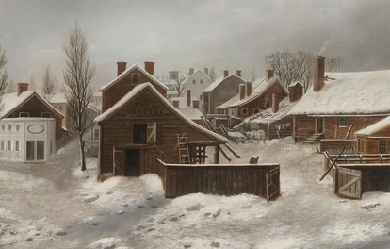
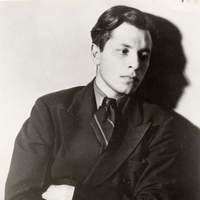
Delmore Schwartz (December 8, 1913– July 11, 1966) was an American poet and short story writer. Biography Schwartz was born in 1913 in Brooklyn, New York, where he also grew up. His parents, Harry and Rose, both Romanian Jews, separated when Schwartz was nine, and their divorce had a profound effect on him. In 1930, Schwartz’s father suddenly died at the age of 49. Though Harry had accumulated a good deal of wealth from his dealings in the real estate business, Delmore only inherited a small amount of that money as the result of the shady dealings of the executor of Harry’s estate. According to Schwartz’s biographer, James Atlas, "Delmore continued to hope that he would eventually receive his legacy [even] as late as 1946.” Schwartz spent time at Columbia University and the University of Wisconsin before finally graduating from New York University in 1935. He then did some graduate work in philosophy at Harvard University, where he studied with the philosopher Alfred North Whitehead, but left and returned to New York without receiving a degree. Soon thereafter, he made his parents’ disastrous marriage the subject of his most famous short story, “In Dreams Begin Responsibilities”, which was published in 1937 in the first issue of Partisan Review. This story and other short stories and poems became his first book, also entitled In Dreams Begin Responsibilities, published in 1938 when Schwartz was only 25 years old. The book was well received, and made him a well-known figure in New York intellectual circles. His work received praise from some of the most respected people in literature, including T. S. Eliot, William Carlos Williams, and Ezra Pound, and Schwartz was considered one of the most gifted and promising young writers of his generation. According to James Atlas, Allen Tate responded to the book by stating that "[Schwartz’s] poetic style marked 'the first real innovation we’ve had since Eliot and Pound.'” In 1937, he also married Gertrude Buckman, a book reviewer for Partisan Review, whom he divorced after six years. For the next couple of decades, he continued to publish stories, poems, plays, and essays, and edited the Partisan Review from 1943 to 1955, as well as The New Republic. Schwartz was deeply upset when his epic poem, Genesis, which he published in 1943 and hoped would stand alongside other Modernist epics like The Waste Land and The Cantos as a masterpiece, received a negative critical response. Later, in 1948, he married the much younger novelist, Elizabeth Pollet. This relationship also ended in divorce. In 1959, he became the youngest-ever recipient of the Bollingen Prize, awarded for a collection of poetry he published that year, Summer Knowledge: New and Selected Poems. His poetry differed from his stories in that it was less autobiographical and more philosophical. His verse also became increasingly abstract in his later years. He taught creative writing at six universities, including Syracuse, Princeton, and Kenyon College. In addition to being known as a gifted writer, Schwartz was considered a great conversationalist and spent much time entertaining friends at the White Horse Tavern in New York City. Much of Schwartz’s work is notable for its philosophical and deeply meditative nature, and the literary critic, R.W. Flint, wrote that Schwartz’s stories were “the definitive portrait of the Jewish middle class in New York during the Depression.” In particular, Schwartz emphasized the large divide that existed between his generation (which came of age during the Depression) and his parents’ generation (who had often come to the United States as first-generation immigrants and whose idealistic view of America differed greatly from his own). In another take on Schwartz’s fiction, Morris Dickstein wrote that “Schwartz’s best stories are either poker-faced satirical takes on the bohemians and outright failures of his generation, as in 'The World Is a Wedding’ and 'New Year’s Eve,' or chronicles of the distressed lives of his parents’ generation, for whom the promise of American life has not panned out.” Schwartz was unable to repeat or build on his early successes later in life as a result of alcoholism and mental illness, and his last years were spent in reclusion at the Columbia Hotel in New York City. In fact, Schwartz was so isolated from the rest of the world that when he died on July 11, 1966, at age 52, of a heart attack, two days passed before his body was identified at the morgue. Schwartz was interred at Cedar Park Cemetery, in Emerson, New Jersey. A selection of his short stories was published posthumously in 1978 under the title In Dreams Begin Responsibilities and Other Stories and was edited by James Atlas who had written a biography of Schwartz, Delmore Schwartz: The Life of An American Poet, two years earlier. Later, another collection of Schwartz’s work, Screeno: Stories & Poems, was published in 2004. This collection contained fewer stories than In Dreams Begin Responsibilities and Other Stories but it also included a selection of some of Schwartz’s best-known poems like “The Heavy Bear Who Goes With Me” and “In The Naked Bed, In Plato’s Cave”. Screeno also featured an introduction by the fiction writer and essayist, Cynthia Ozick. Tributes to Schwartz One of the earliest well-known tributes to Schwartz came from Schwartz’s friend, fellow poet Robert Lowell, who published the poem “To Delmore Schwartz” in 1959 (while Schwartz was still alive) in the book Life Studies. In it Lowell reminisces about the time that the two poets lived together in Cambridge, Massachusetts in 1946, writing that they were "underseas fellows, nobly mad,/ we talked away our friends.” One year following Schwartz’s death, in 1967, his former student at Syracuse University, the rock musician Lou Reed, dedicated his song “European Son” to Schwartz (although the lyrics themselves made no direct reference to Schwartz). Then, in 1968, Schwartz’s friend and peer, fellow poet John Berryman, dedicated his book His Toy, His Dream, His Rest “to the sacred memory of Delmore Schwartz,” including 12 elegiac poems about Schwartz in the book. In "Dream Song #149," Berryman wrote of Schwartz, In the brightness of his promise, unstained, I saw him thro’ the mist of the actual blazing with insight, warm with gossip thro’ all our Harvard years when both of us were just becoming known I got him out of a police-station once, in Washington, the world is tref and grief too astray for tears. The most ambitious literary tribute to Schwartz came in 1975 when Saul Bellow, a one-time protégé of Schwartz’s, published his Pulitzer Prize-winning novel Humboldt’s Gift which was based on his relationship with Schwartz. Although the character of Von Humboldt Fleischer is Bellow’s portrait of Schwartz during Schwartz’s declining years, the book is actually a testament to Schwartz’s lasting artistic influence on Bellow. Although he is a genius, the Fleischer/Schwartz character struggles financially and has trouble finding a secure university teaching position. He becomes increasingly paranoid and jealous of the success of the main character, Charlie Citrine (who is based upon Bellow himself), becoming isolated and descending into alcoholism and madness. Lou Reed’s 1982 album The Blue Mask included his second Schwartz homage with the song “My House”. The song is a more direct tribute to Schwartz than the above-mentioned “European Son” in that the lyrics of “My House” are about Reed’s relationship with Schwartz. In the song, Reed writes that Schwartz “was the first great man that I ever met”. Much later, in the June 2012 issue of Poetry magazine, Lou Reed published a short prose tribute to Schwartz entitled “O Delmore How I Miss You.” In the piece, Reed quotes and references a number of Schwartz’s short stories and poems including “In Dreams Begin Responsibilities,” “The World is a Wedding,” and “The Heavy Bear Who Goes With Me.” “O Delmore How I Miss You” was re-published as the preface to the New Directions 2012 reissue of Schwartz’s posthumously published story collection In Dreams Begin Responsibilities and Other Stories. In John A. McDermott’s poetry collection, The Idea of God in Tennessee, he includes a poem written for and referencing Schwartz, titled The Poet’s Body, Unclaimed in the Manhattan Morgue. The poem makes mention of Schwartz’s writing, daily habits, and death. Cultural references Scott Spencer uses the final six lines of Schwartz’s poem “I Am a Book I Neither Wrote nor Read” as an epigraph for his National Book Award nominated novel, Endless Love. The words “endless love” are the final two words of that poem. In the film Star Trek Generations, the villain Tolian Soran quotes from Schwartz’s poem, “Calmly We Walk Through This April’s Day”, telling Captain Jean-Luc Picard, “They say time is the fire in which we burn.” Playwright Philip Ridley uses the same line as one of the epigraphs for his 2012 play Shivered. The German symphonic metal band Agathodaimon uses the line “Time is the fire” as the title to one of the songs on the album Phoenix. Grant Morrison named a story in his DC Comics miniseries Multiversity, Pax Americana, after the same line as well as quoting it on the cover. In 1996, Donald Margulies wrote the play Collected Stories, in which the aging writer and teacher Ruth Steiner (a fictional character) reveals that she once had a great affair in her youth with Delmore Schwartz in Greenwich Village (during the period of time when Schwartz was in declining health from alcoholism and mental illness) to her young student, Lisa. Lisa then controversially uses the affair revelation as the basis for a successful novel. The play was produced twice off-Broadway and once on Broadway. Published works The Poets’ Pack (Rudge, New York, 1932), school anthology including four poems by Schwartz. In Dreams Begin Responsibilities. (New Directions, 1938), ISBN 978-0-8112-0680-8, a collection of short stories and poems. Shenandoah and Other Verse Plays (New Directions, 1941). Genesis: Book One (New Directions, 1943), book-length poem about the growth of a human being. The World Is a Wedding (New Directions, 1948), a collection of short stories. Vaudeville for a Princess and Other Poems (New Directions, 1950). Summer Knowledge: New and Selected Poems. (New Directions, 1959; reprinted 1967), ISBN 978-0-8112-0191-9. Successful Love and Other Stories (Corinth Books, 1961; Persea Books, 1985), ISBN 978-0-89255-094-4 Published posthumously Donald Dike, David Zucker (ed.) Selected Essays (1970; University of Chicago Press, 1985), ISBN 978-0-226-74214-4 In Dreams Begin Responsibilities and Other Stories (New Directions, 1978), a short story collection. Letters of Delmore Schwartz, ed. Robert Phillips (1984) ISBN 978-0-86538-048-6 The Ego Is Always at the Wheel: Bagatelles, ed. Robert Phillips (1986), a collection of humorously whimsical short essays Last and Lost Poems. ed. Robert Phillips (New Directions, 1989) ISBN 978-0-8112-1096-6 Screeno: Stories & Poems. New Directions. 2004. ISBN 978-0-8112-1573-2. References Wikipedia—https://en.wikipedia.org/wiki/Delmore_Schwartz
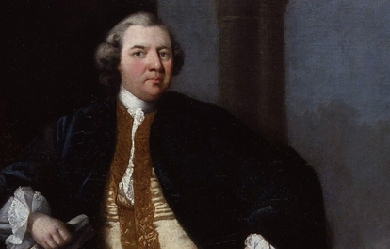

William Shenstone (18 November 1714– 11 February 1763) was an English poet and one of the earliest practitioners of landscape gardening through the development of his estate, The Leasowes. Biography Son of Thomas Shenstone and Anne Penn, daughter of William Penn of Harborough Hall, then in Hagley (now Blakedown), Shenstone was born at the Leasowes, Halesowen. At that time this was an enclave of Shropshire within the county of Worcestershire and now in the West Midlands. Shenstone received part of his formal education at Halesowen Grammar School (now The Earls High School). In 1741, Shenstone became bailiff to the feoffees of Halesowen Grammar School. While attending Solihull School, he began a lifelong friendship with Richard Jago. He went up to Pembroke College, Oxford in 1732 and made another firm friend there in Richard Graves, the author of The Spiritual Quixote. Shenstone took no degree, but, while still at Oxford, he published Poems on various occasions, written for the entertainment of the author (1737). This edition was intended for private circulation only but, containing the first draft of The Schoolmistress, it attracted some wider attention. Shenstone tried hard to suppress it but in 1742 he published anonymously a revised draft of The Schoolmistress, a Poem in imitation of Spenser. The inspiration of the poem was Sarah Lloyd, teacher of the village school where Shenstone received his first education. Isaac D’Israeli contended that Robert Dodsley had been misled in publishing it as one of a sequence of Moral Poems, its intention having been satirical, as evidenced by the ludicrous index appended to its original publication. In 1741 he published The Judgment of Hercules. He inherited the Leasowes estate, and retired there in 1745 to undertake what proved the chief work of his life, the beautifying of his property. He embarked on elaborate schemes of landscape gardening which gave The Leasowes a wide celebrity (see ferme ornée), but sadly impoverished the owner. Shenstone was not a contented recluse. He desired constant admiration of his gardens, and he never ceased to lament his lack of fame as a poet. Shenstone died unmarried. Critical appraisal Shenstone’s poems of nature were written in praise of her most artificial aspects, but the emotions they express were obviously genuine. His Schoolmistress was admired by Oliver Goldsmith, with whom Shenstone had much in common, and his Elegies written at various times and to some extent biographical in character won the praise of Robert Burns who, in the preface to Poems, chiefly in the Scottish Dialect (1786), called him... that celebrated poet whose divine elegies do honour to our language, our nation and our species. The best example of purely technical skill in his works is perhaps his success in the management of the anapaestic trimeter in his Pastoral Ballad in Four Parts (written in 1743), but first printed in Dodsley’s Collection of Poems (vol. iv., 1755). Arthur Schopenhauer mentions Shenstone in his discussion of equivocation. "[C]oncepts", Schopenhauer asserted, “which in and by themselves contain nothing improper, yet the actual case brought under them leads to an improper conception” are called equivocations. He continued: But a perfect specimen of a sustained and magnificent equivocation is Shenstone’s incomparable epitaph on a justice of the peace, which in its high-sounding lapidary style appears to speak of noble and sublime things, whereas under each of their concepts something quite different is to be subsumed, which appears only in the last word of all as the unexpected key to the whole, and the reader discovers with loud laughter that he has read merely a very obscene equivocation. Bibliography * Shenstone’s works were first published by his friend Robert Dodsley (3 vols., 1764–1769). The second volume contains Dodsley’s description of the Leasowes. The last, consisting of correspondence with Graves, Jago and others, appeared after Dodsley’s death. Other letters of Shenstone’s are included in Select Letters (ed. Thomas Hill 1778). The letters of Lady Luxborough (née Henrietta St John) to Shenstone were printed by T. Dodsley in 1775; much additional correspondence is preserved in the British Museum letters to Lady Luxborough (Add. MS. 28958), Dodsley’s letters to Shenstone (Add. MS. 28959), and correspondence between Shenstone and Bishop Percy from 1757 to 1763 the last being of especial interest; To Shenstone was due the original suggestion of Percy’s Reliques, a service which would alone entitle him to a place among the precursors of the romantic movement in English literature. * In a letter written in 1741 Shenstone became the first person to record the use of “floccinaucinihilipilification”. In the first edition of the Oxford English Dictionary this was recognised as the longest word in the English language. Memorials * One of the five houses of Solihull School is named after him. * One of the four houses of The Earls High School (formerly Halesowen Grammar School) is named after him. * Solihull School’s annual publication is named after him– The Shenstonian. * Louis-René Girardin built a memorial in the French town of Ermenonville. * A prominent public house (pub) in Halesowen (Queensway) is named “The William Shenstone”. The walls are adorned with engravings of The Leasowes in Shenstone’s time. * Two roads in the area near to his home in the Leasowes Park are named in his honour: Shenstone Valley Road and Shenstone Avenue. References Wikipedia—https://en.wikipedia.org/wiki/William_Shenstone

